Hello World!
I am not sure when going to Antarctica became a dream of mine but, now, this year, it is becoming a reality. I will be working at the Amundsen-Scott South Pole Station as a Research Scientist starting in November 2020. I honestly still can’t believe it’s real. This blog is partly for me and partly for anyone who wants to follow along on my amazing journey.
My name is Danielle and these are my adventures.
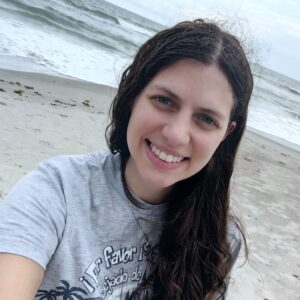
If you would like to receive an email when I add new posts please let me know at danielle@wildantarctic.com.
Or follow on Instagram @wildantarctic
Now that I’m at the South Pole, I can only get online when the satellites are up! Check out the Weekly Satellite Service Schedule here if you’re interested (make sure you check the right time zone! They include 6 different ones on the schedule).
Of Planes, and Things, and Building Teams
Mar 21, 2024
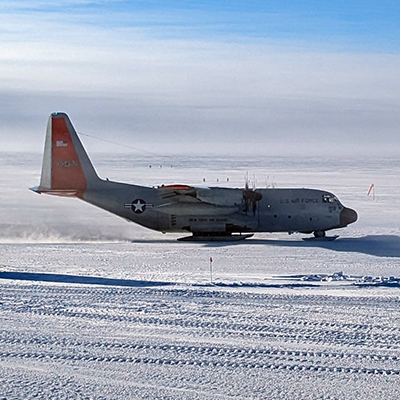
On February 15, the last LC-130 (the big military planes that are the primary cargo and personnel carriers to the South Pole) left with the last 30ish summer personnel (technically 2 people hung around for 4 more days helping offload fuel but eh, who’s counting?) thereby isolating us 41 winterovers (technically we were 39 at that point, 2 more people came 4 days later when the aforementioned 2 people left (the fact that it was 2 in and 2 out is oddly enough coincidental)). Some people consider this to be when the station is ‘closed’. But it didn’t really feel like we had closed as the South Pole Overland Traverse was still here offloading fuel and we had 6 planes and their crews scheduled to fly through to get fuel on their way to the Western Peninsula and the North. Nevertheless, we started transitioning into ‘winter-mode’ (no more brunch on Sundays, very sad).
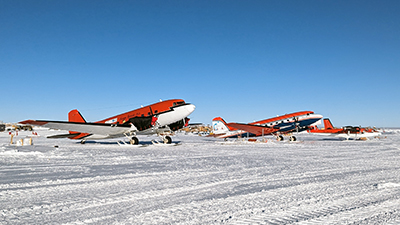
One of the first bits of business once our full crew of 41 was assembled was to gather together in the gym for team building activities. While I recognize that these types of things are important, I don’t really like making paper (or cardboard, in this case) airplanes. It was, however, nice for all of us to be in a room together and get to know each other a little bit more. And while, in some ways, all of these team building activities are designed to simulate how we’d work together in real difficult/trying times, none of them are really as telling, in my opinion, as the real thing. Which is why it was somewhat ironic that, at the very end of our team building day, the elevator that is used to transport food and supplies from our under-snow storage warehouse broke. Without this elevator we would have to carry, by hand, roughly 1,000 pounds of food up about 7 flights of stairs every week, for the rest of the winter. That sounded awful. So. We took advantage of it still being relatively warm and light outside (mostly because this means we can still use heavy equipment to do most of the heavy lifting) and over 3 days with all 41 crew members helping move over 34,000 pounds of food and supplies to the station where it will be easily accessible over the winter. It was really wonderful seeing everyone come together to accomplish such a big thing (much better than building paper airplanes).
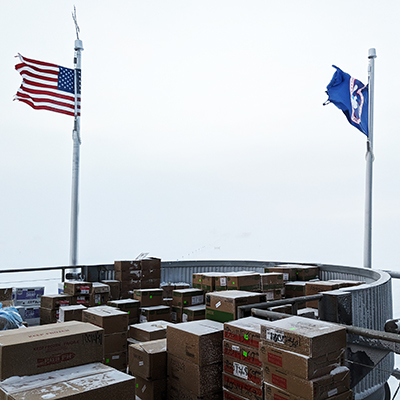
The second bit of ‘business’ to complete was the South Pole tradition of having a movie marathon where we watch all three iterations of ‘The Thing’ (from 1951, 1982, and 2011) when the station closes. Often this means before the last planes finish demobilizing but we decided as a crew that we wanted to wait until we were really alone and no one was coming or going (this was due, in part, to the number of us who would have to be involved in flight operations and we really wanted everyone to get to enjoy the movies together). As a special treat this year, our preventative maintenance foreman had reached out and was able to coordinate an interview with John Carpenter (director of the 1982 ‘The Thing’)! He had evidently never heard of our tradition of watching his movie and he was probably just as excited to talk to us as we were to talk to him.
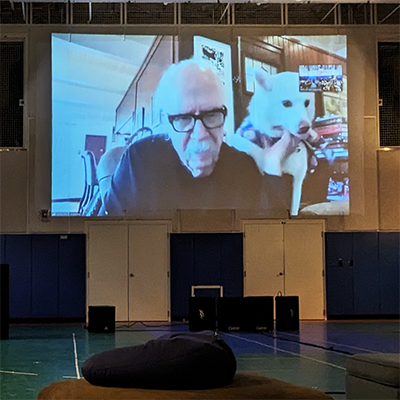
And now the sun is getting really low! This is one of my favorite times of the year because it is always so pretty outside. But soon enough we will have stars and auroras, and I am so excited!
A Season In Review
Feb 16, 2024
My days (or rather, working hours, it’s always daytime here) have been filled with learning about the telescope I’ll be looking after over the winter and helping to perform some routine (and not-so-routine) maintenance. The building that houses my telescope if just over half a mile from station and walking out and back multiple times a day in the -20F (this is ok) to -50F (this is brr) weather has led to the over doubling of my pre-Pole daily step count.
My evenings have been filled with all manner of social activities (and some much needed nights of rest/introvert time). I played in a D&D campaign, watched many movies (we started on a disaster movie binge once the summer crew started leaving), sang karaoke, performed in a flute duet, and went to a bubble wrap disco. Not to mention countless nights just hanging out and getting to know the many people who were choosing to call the South Pole home.
I do find myself looking forward to the winter when the population is smaller and the hectic energy of the summer dies down.
But as the summer draws to a close I want to share some of my favorite pictures from the season (with no context :p )
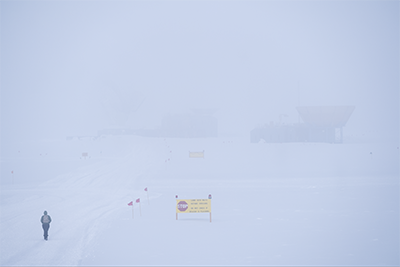
Photo courtesy of Josh Veitch-Michaelis

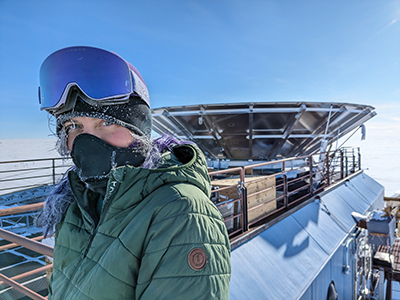
Photo courtesy of Josh Veitch-Michaelis
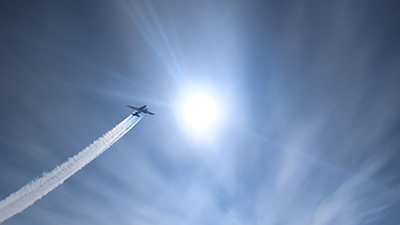
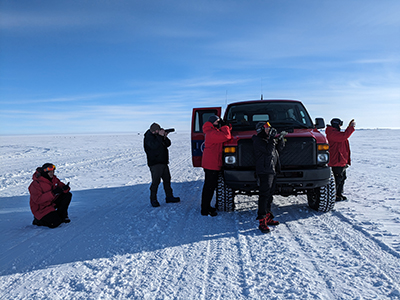
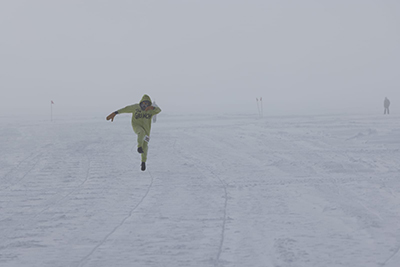
Photo courtesy of Kevin Zagorski
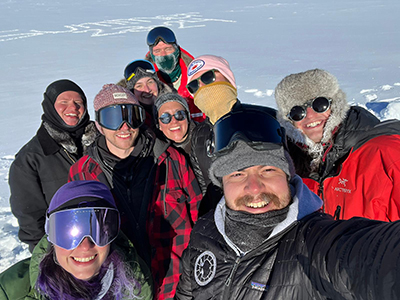
Photo courtesy of Josh Veitch-Michaelis
Here We Come A-Caroling
Jan 10, 2024
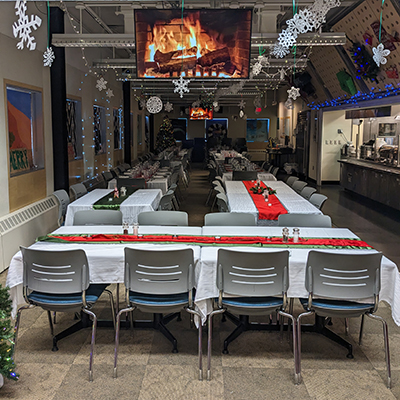
Christmas Day kicks off with the annual Race Around the World. Three years ago, I joined the onesie clad racers (I was a unicorn) in the 2 to 3 mile race (part of which involves going around the geographic pole, thereby going ‘around the world’). This year, I joined the ‘marching band’ (and even won the award for best costume!).
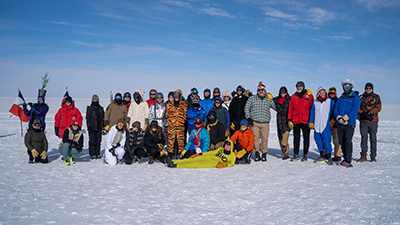
Photo courtesy of Josh Veitch-Michaelis
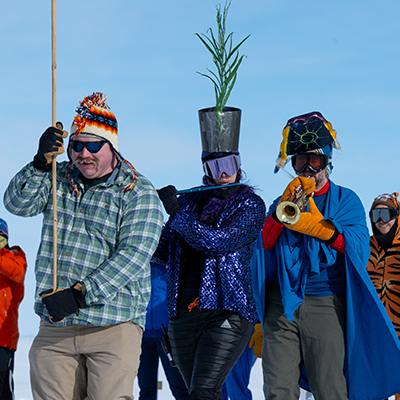
Photo courtesy of Tim Lynch
The last Christmas I was here, a bunch of us gathered together in the Communications room and sang carols with other stations across the continent. This year we all bundled onto a sled pulled by a tracked vehicle and drove out to the tourist camp that is set up not far from station. Once there, we sang carols before heading back home.
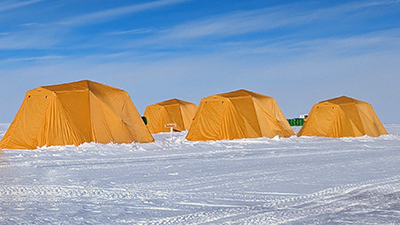
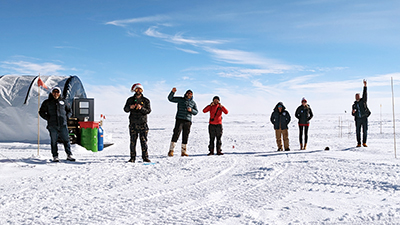
Being away from family for the holidays is probably the toughest part of being here. But thankfully with reasonable internet and understanding family, it is still possible to share in the holiday cheer 🙂
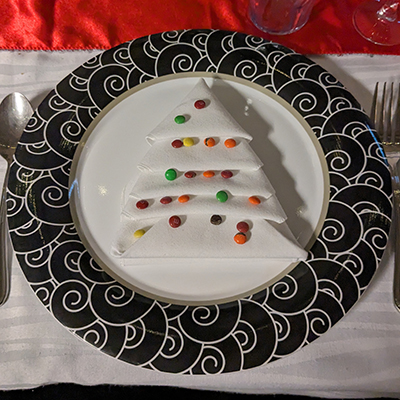
Merry Christmas and a Happy New Year!
So Much For Relative Calm
Dec 6, 2023
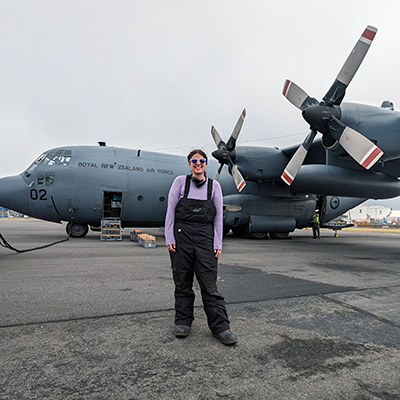
In what should really be less of a surprise, my flight to McMurdo from Christchurch was not delayed (well technically we were delayed a few hours for weather (I don’t know that there has been a completely on time flight all season)). I arrived in McMurdo just in time for Thanksgiving which was observed on Saturday (though Black Friday was still on Friday (yes, there are Black Friday sales, even in Antarctica)). While I had spent two Thanksgivings at Pole, I had never experienced the affair at McMurdo. The large population requires that everyone sign up for one of multiple seatings and a huge line forms waiting to get in to the galley before each one. The food, decorations, and company were all wonderful!
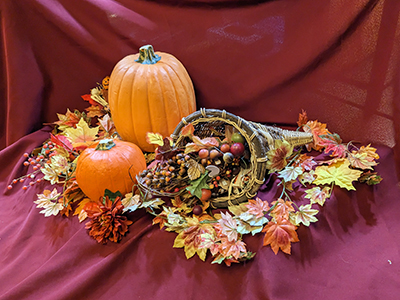
In total I ended up spending four days in McMurdo (significantly less than the three weeks I spent there last time I deployed). I primarily occupied myself with various craft projects I had been working on as well as catching up on some work. And then, in what was an even greater surprise than my flight to McMurdo, my flight to Pole wasn’t delayed either (well technically there was a mechanical delay for a few hours but I’ll take what I can get)!
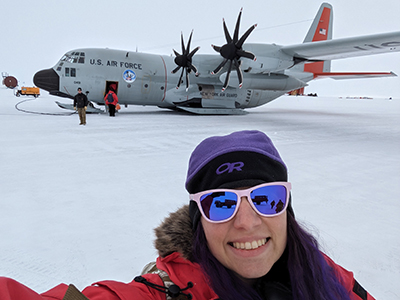
I had forgotten how exhausting adjusting to altitude is. Not to mention the fire hose of information I needed to absorb for my new role. So far my time here has been a blur. My days are filled with learning how to maintain the telescope I will be responsible for as well as help out the rest of my team on the other telescope they run.
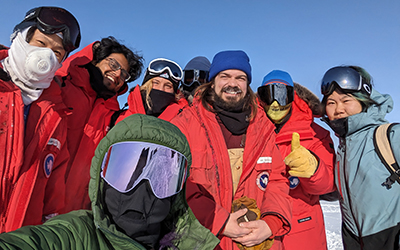
And while I am very tired and busy, I am so happy to be here. Being back feels so good and while it is overwhelming, I am excited for the busy summer season and can’t wait until the winter!
Leaving On a Jet Plane
Nov 22, 2023
Well, I suppose it was actually 3 jet planes but who’s counting :p
In all seriousness though, it’s so wild that after months of planning, packing, and goodbyes, I am on my way. My flights to Christchurch, New Zealand were generally uneventful; I even managed to get a reasonable amount of sleep on the long-haul flight over the Pacific. I’m scheduled to be here for a few days, sorting out gear issue and various other trainings (and visiting as many local coffee shops as I can!).
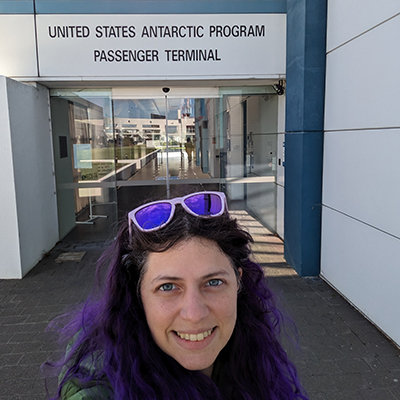
So much of the process is weird to me, mostly because I feel that I’ve done it before, just not quite like this. Last time I deployed, because of the managed quarantine, all of my ECW (Extreme Cold Weather) gear was delivered to my hotel for me to try on and sort out if I needed new sizes. This time everything is back to the ‘normal’ procedure of going to the CDC (Clothing Distribution Center) at the International Antarctic Centre. Last time, we were always shuttled around together in a rather large cohort. This time I think there will be less than 20 people on my flight and we are mostly responsible for getting ourselves around. None of these are difficult changes but it’s odd to have heard that this was normal and now experience it.
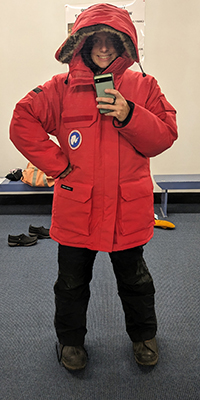
If all goes to plan, I won’t be here that long, so I’m doing my best to enjoy the relative calm while it lasts!
I Survived the Elk Rut
Nov 16, 2023
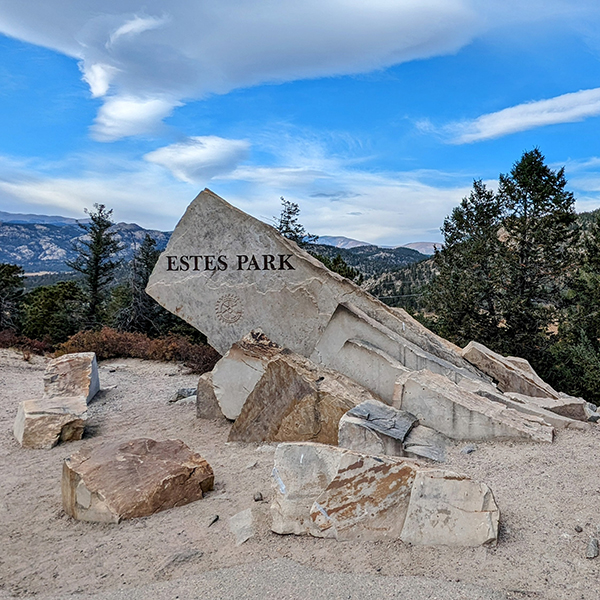
I suppose it speaks to the engagement of the sessions that I don’t really have many pictures. I took some after the fact, but not actually during many of the activities. Except, of course, for the cardboard boat building challenge. Yes, that is correct, we were tasked to build boats that were each capable of transporting a real person across real water using little more than cardboard, duct tape, and plastic sheets.
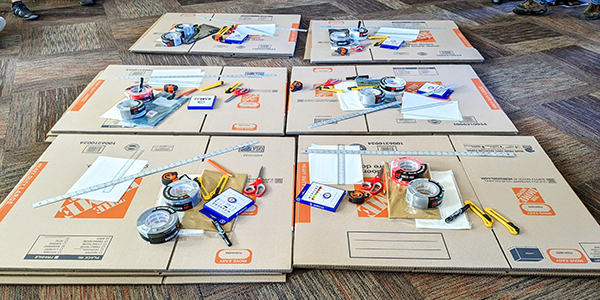
And so, we built many boats.
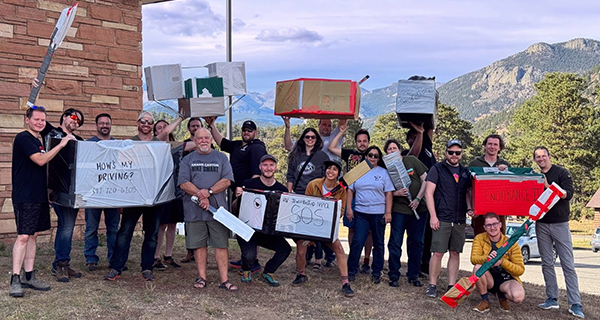
Some proved pool-worthy.
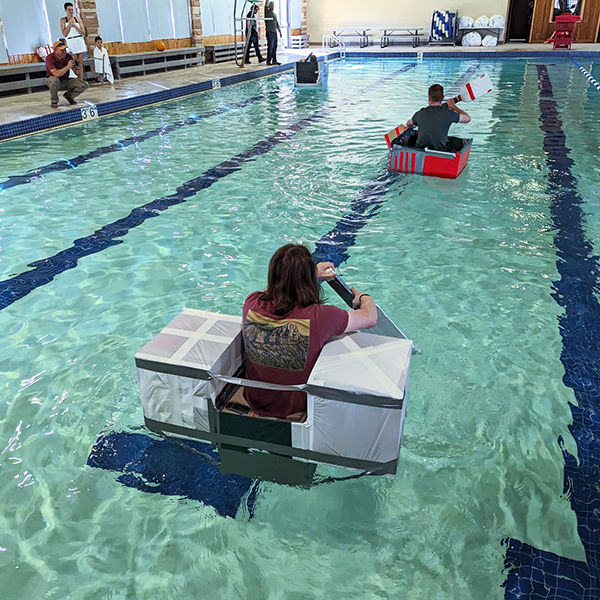
Some did not.
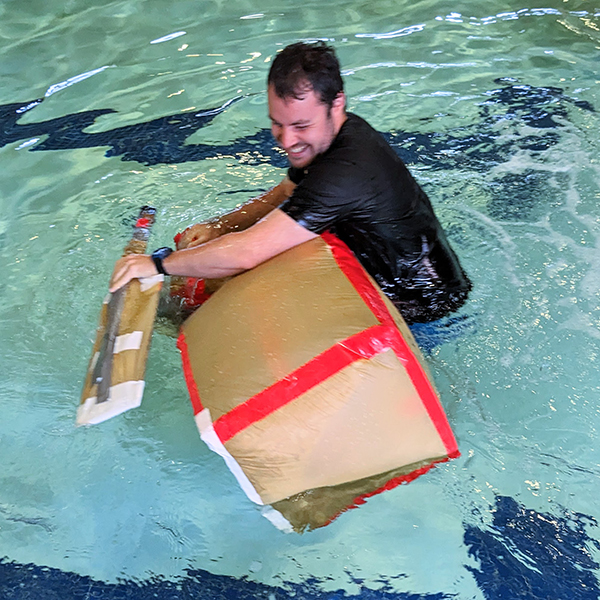
And some became motor boats.
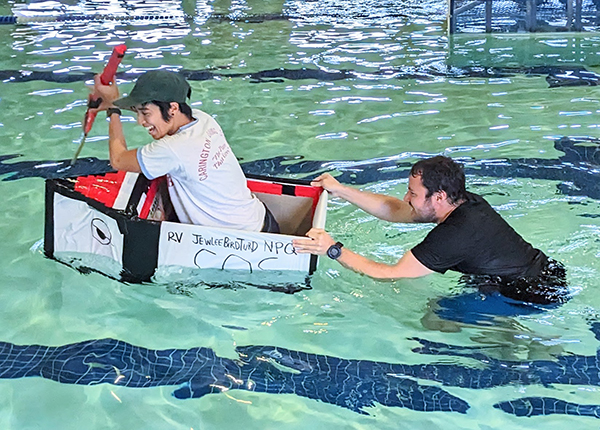
At the end of the three days, we hadn’t completed any trust falls or kumbaya group hugs, but we had completed many activities focused on effective communication, planning, and self-awareness. While I had done some of these things before my last winter, hearing them again after having wintered put them in a different perspective. And it also almost goes without saying but being able to do these kinds of teambuildings in person felt so much more impactful than doing them online had. It was so much fun getting to know my future winterovers and bonding over our successes and frustrations. I think we are going to have a really great crew, and I can’t wait!
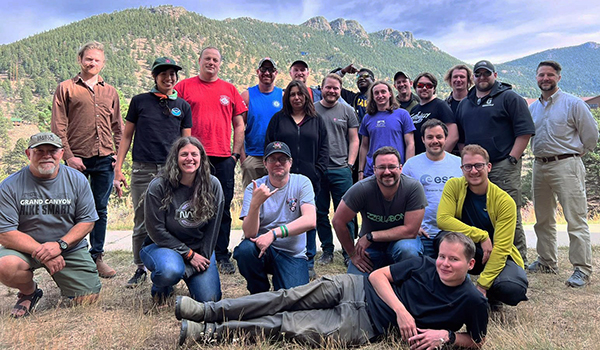
What? You don’t have hose lines!?
Nov 5, 2023
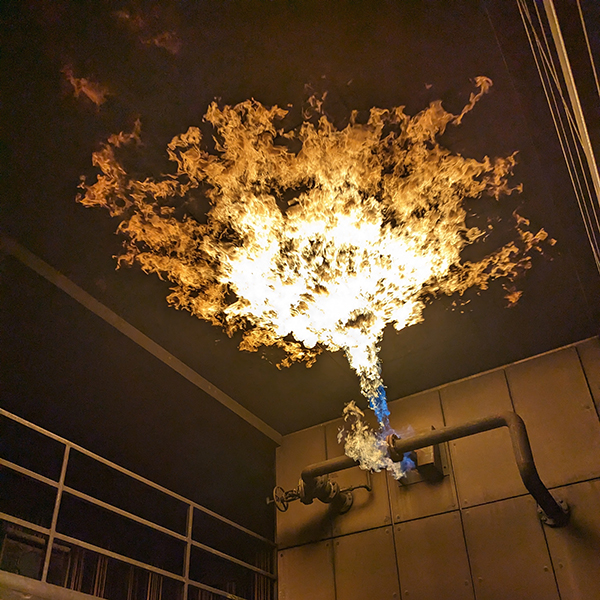
Myself and several other members of the 2024 winterover crew met in Jacksonville for a week of learning about how fire behaves and how to put it out. The instructors were great and really embraced trying to teach us skills and techniques that would be applicable for us at the South Pole where there isn’t really any water with which to put out fires (though they kind of thought that we’re crazy).
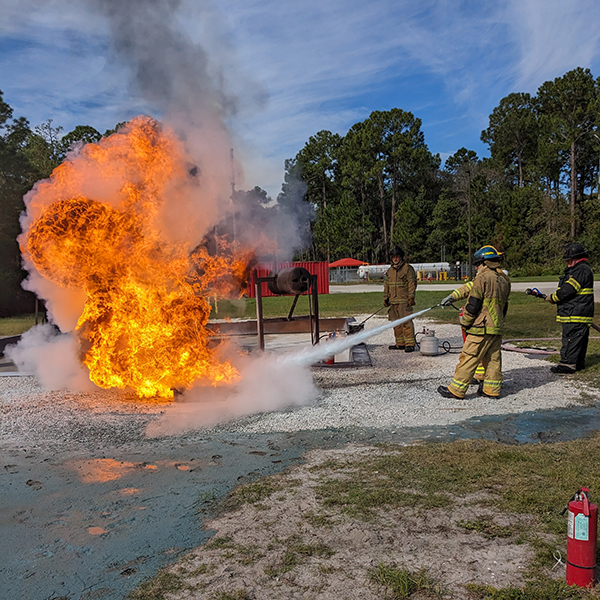
The week culminated with us putting on our bunker gear and watching an incipient flame grow into a roaring fire. Many of the search techniques I’d learned before made much more sense after seeing the heat and smoke layers slowly descend from the ceiling (it’s really obvious when you can/can’t see and when you don’t want to be standing up!).
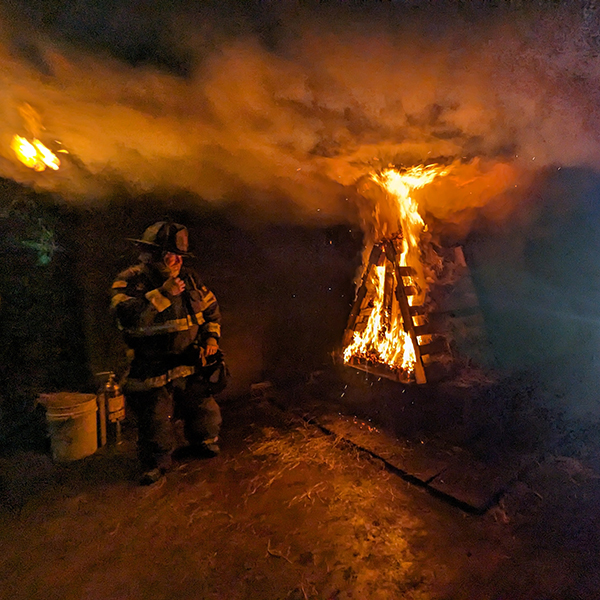
And, of course, the week would not have been complete without an appropriately epic group photo :p
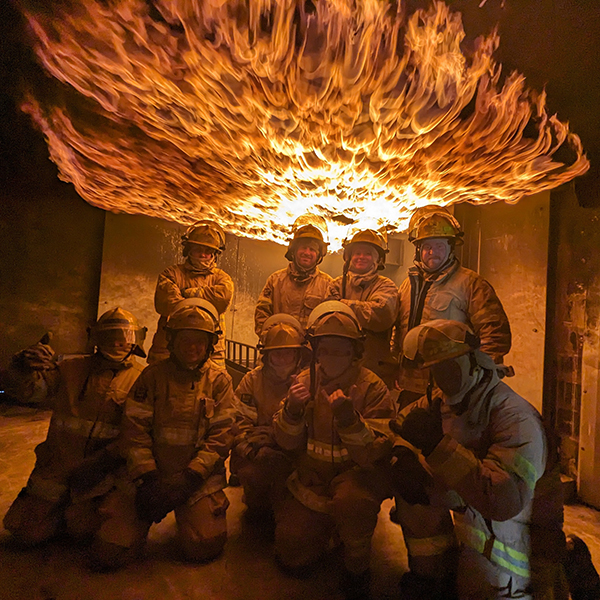
Since I’ve Been Gone
Oct 17, 2023
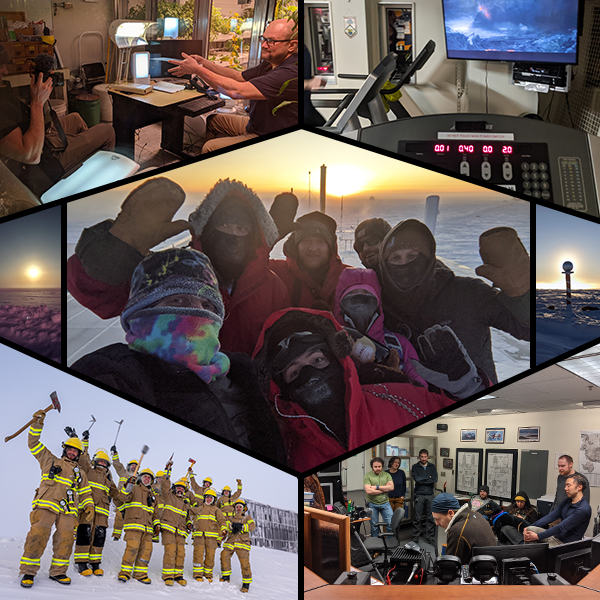
Then, before I knew it, the 2021 summer crew had arrived and was settling in. I spent the next month or so training the new RAs who would be taking over my responsibilities, helping build and design the 2021 Winterover group photo and frame, and slowly watching the majority of the people I had spent the last 9 months with board planes and fly away. Until, on November 29, it was my turn to board a plane and watch my home disappear into the Antarctic plateau.

Photo courtesy of Martin Wolf
I was very fortunate to spend about a month traveling around (a mostly deserted) New Zealand. While I was very excited to feel rain and go swimming, I was not prepared for how sensitive my skin had become after not being exposed to the sun for a year. I promptly got sunburned all over (even the backs of my hands! I don’t think the backs of my hands have ever been sunburned before). After much hiking, camping, wine tasting, alpaca feeding, and driving, I headed back to Florida.
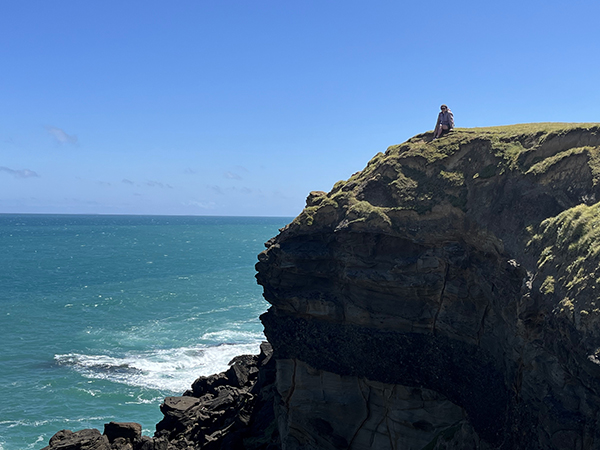
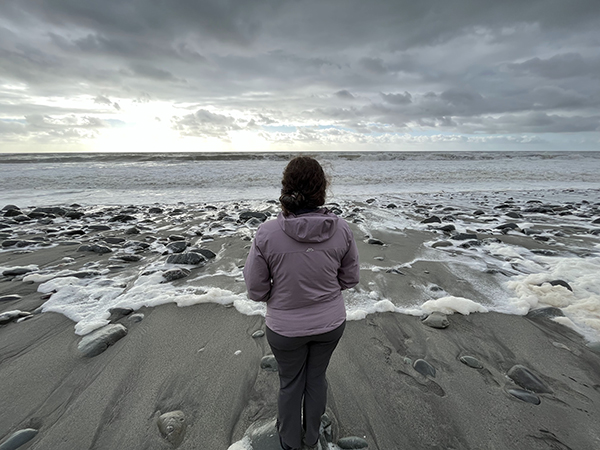
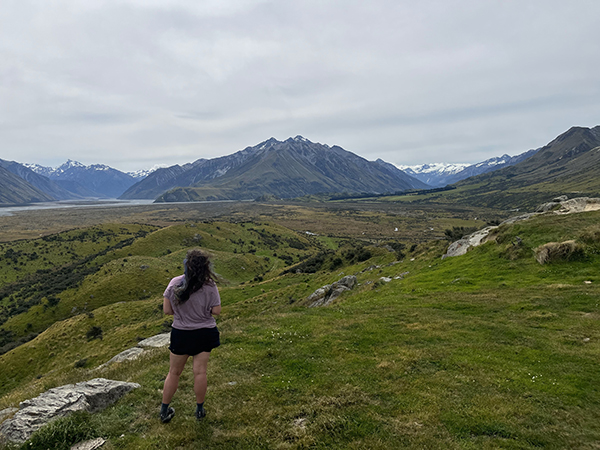
Photos courtesy of Josh Veitch-Michaelis
I started a new job in Disney’s marketing analytics group. Growing up in Florida, Disney had always been a part of my life and I wanted to give a more traditional job a try. But after about a year I could feel the ice calling me back.

And that (mostly) brings us to now. I will be deploying in November as one of two winterovers for the BICEP experiment (one of the telescopes at Pole). I still have a lot to do to get ready but I can’t wait!
South Polympics
Sep 18, 2021
One of my favorite things in the world is the Olympics. Around the time of the last summer Olympics, I had just moved into a new apartment and was going to see how I’d get on without cable. Then the Olympics started, and I immediately caved and signed up for some silly number of channels so that I could get all of the Olympics channels and not miss a thing. I spent almost two full weeks doing nothing but watching the Olympics all day long (and then catching up on things I missed at night).
It was one of my great sadnesses that I wouldn’t be able to watch the Olympics this year due to their postponement. I still checked the event updates each morning when the internet came up, but it was not quite the same as watching every event live. However, all was not lost, because each year the Amundsen-Scott South Pole Station hosts the South Polympics!
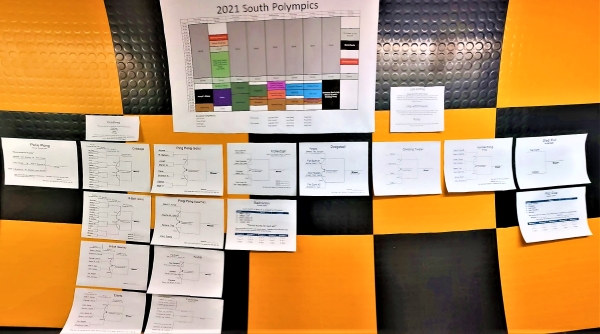
We organized ourselves into ‘countries’ of four people each (my team represented the ‘country’ of Winden (it’s the town in the Netflix show Dark which we had watched earlier in the season (it’s a really good show and you should definitely watch it!)). Of course, everything kicked off with the opening ceremonies; my team and I dressed up in ‘traditional’ Winden garb (which only really made sense if you’d seen the show) and proudly displayed our flag!
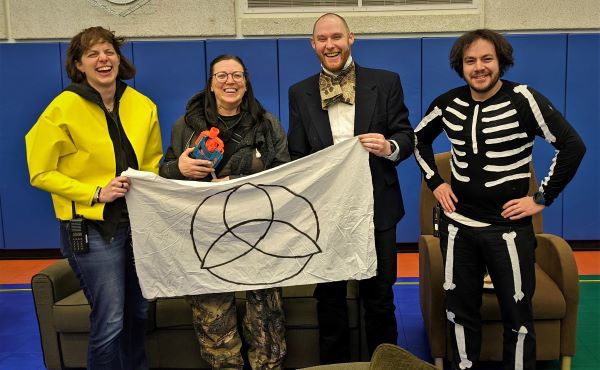
Photo courtesy of Lisa Minelli-Endlich
After a week of intense competition, with events ranging from ‘legitimate’ activities (i.e. volleyball) to completely random and silly ones (i.e. the saltine challenge), the ‘country’ of Flat Earth walked away with the most medals! My own ‘country’ of Winden won gold in darts, silver in cornhole and poker, and bronze in both singles and doubles 8 ball (see, very legitimate Olympic events :p).
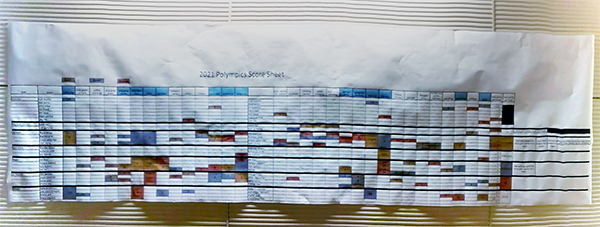
90° At 90°
Sep 14, 2021
It would be an understatement to say that there are a few traditions here at the South Pole. One such tradition involves channeling one’s inner Antarctic Explorer by sleeping in a tent outside (yes, outside the station, in the many, many, degrees below 0 weather). The tent we have here is based off of the design used by Robert F. Scott, one of the first two explorers to reach the South Pole. It is shaped like a pyramid with two layers; the outer layer has a flared edge so that it can be weighted down with snow which helps to secure the tent in windy conditions (though it’s not been that windy here, fingers crossed!) and the space between the layers helps keep the inside insulated from the cold. The entrance to the tent consists of two fabric tubes, one attached to each layer, that you have to awkwardly crawl/wriggle your way through. The tubes can be cinched closed with drawstrings which helps to seal up the inside and keep the wind out.
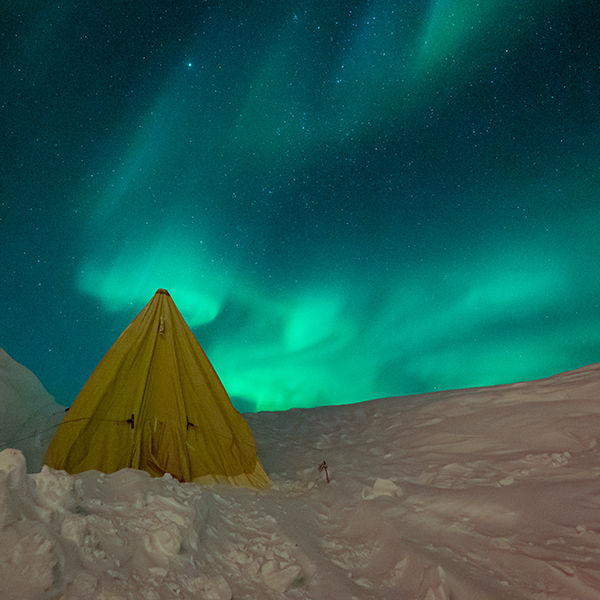
Photo courtesy of Josh Veitch-Michaelis
The specific tent related tradition here is referred to as “90 at 90” for 90 degrees (Fahrenheit) below zero at 90 degrees south. And so it came to pass that, when it got cold enough, myself and a few friends (more people = more warmth) put on many, many, layers of pajamas and coats, crawled into the tent, bundled up in very warm sleeping bags, and spent the night doing our best to sleep without freezing.
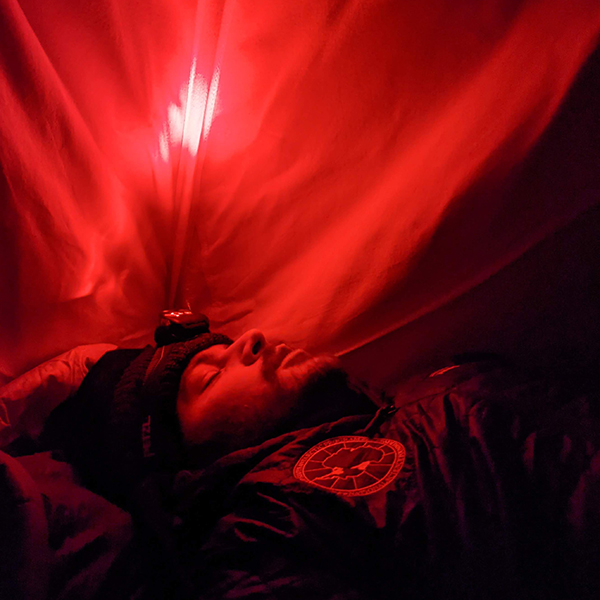
We woke up surrounded by icicles (that had formed on the inside of the tent from where our breaths had condensed on the walls) and frost but no worse for wear. Though, as I wriggled out of tent and made my way back inside the station, I found myself very thankful that I didn’t have to sleep out there every night and that the next time I went to bed it would be in an actual bed in my warm, cozy room.
We Started At The Bottom Now We’re Here
Sep 13, 2021
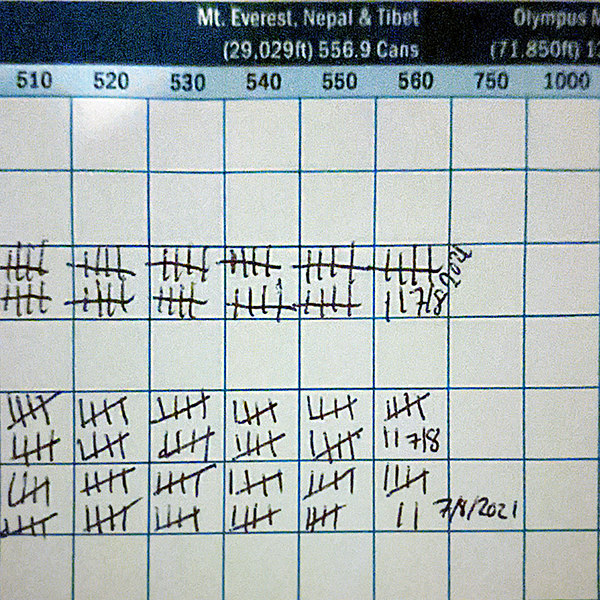
I did it! I climbed Mt Everest one Beer Can (ahem… non-alcoholic vertical tower) at a time! My goal had been to complete this part of the South Pole Triple Crown by Midwinter (June 21) but… best laid plans and what not… As it turned out, it only took just over 2 weeks longer than my original goal which is not too shabby. Of course, I don’t think I would’ve been able to finish it all without my accountibili-buddies completing it with me.
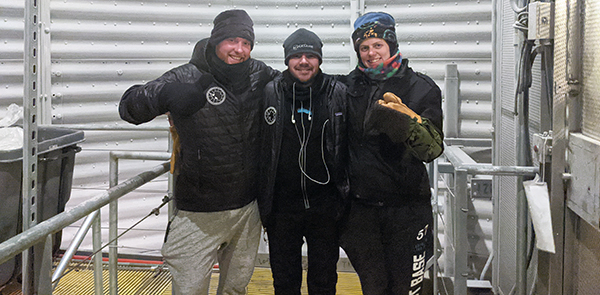
Now that I’ve finished this first part of the South Pole Triple Crown, I am free to focus on completing the other two parts (traversing 835 miles and lifting 1.36 million pounds). It is definitely going to be a challenge to finish everything in the time that I have left, but hey, if I can climb Everest, I feel like I can do anything.
Codex – Many Hands Make Light Work
Sep 2, 2021
While the people working here vary from chefs, to plumbers, to scientists, there is one profession that is entirely absent: janitors. What does this mean for all of us living here? It means that everyone does their part to keep our home clean and tidy. Each week, in groups of 3 to 4, we get assigned cleaning tasks (called House Mouse) throughout the station. Some of the tasks include mopping the hallways, cleaning bathrooms, and shoveling snow. With all of us pitching in to help, the cleaning goes pretty quickly and our home stays nice and clean (though there is quite the competition over the limited number of mops!).
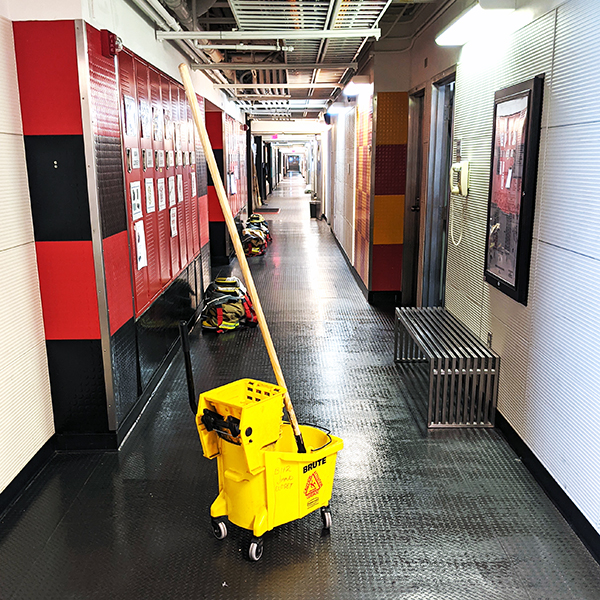
One of the other ways that everyone helps out is by taking a shift washing dishes. All of the dishes (both from the cooking/preparing of food and the eating of it) make their way to the dish pit to be washed and put away. Most of the dish shifts are covered by our steward coordinator but there are way too many for one person to do alone. So, about once a month, each of us takes a shift doing dishes (even our winter site manager!). I’ve usually ended up volunteering more than just once a month though, since I like helping out my friends when it’s their turn and they like to help me out too. It’s a lot more fun (and goes a lot faster!) when you’re working as a team (and having dish pit dance parties!)
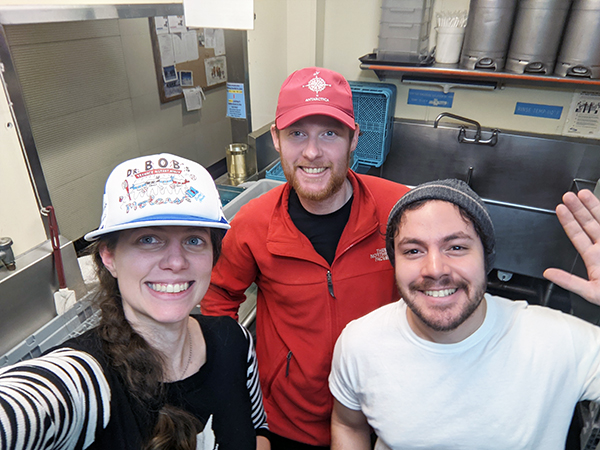
The Longest Night
Sep 1, 2021
Time is a funny thing. I started writing this post (and several others) over two months ago. And now suddenly it’s September and I’m posting things from June… Ah well, better late than never, right?
“The Galley would like to formally request your presence at the Midwinter dinner.” I was told this as I was being handed a fancy invitation (which included a personalized medallion and wax seal). Inside was the menu for the 10-course meal we would be having to celebrate the point at which the sun was at its farthest point from us (in most of the southern hemisphere this would be the longest night, but, ya know, it’s been night for 3 months already and will be for 3 more months so…). This was to be our most elaborate party yet, and I couldn’t wait!
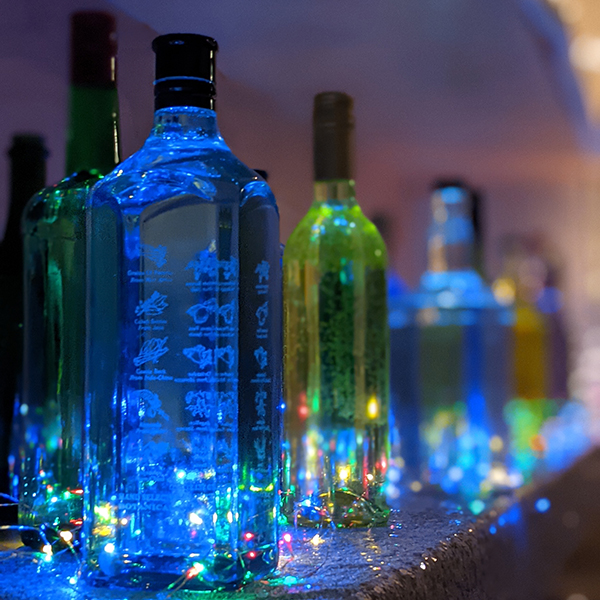
The festivities commenced with a speakeasy themed cocktail hour (complete with a ‘secret’ entrance, bouncer, and required pass phrase (which had been included with our invitations!)).
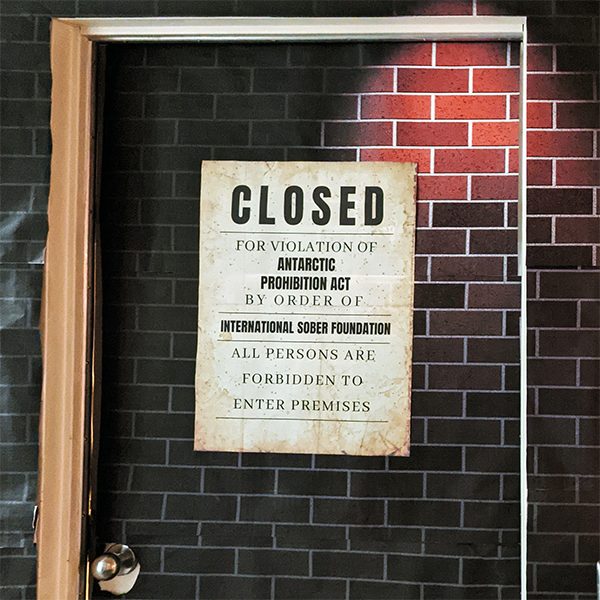
After cocktails, we gathered together for the Midwinter feast. I am constantly amazed by what the galley staff here are able to put together! I had never had a 10-course meal before, and it was absolutely incredible. The planning and artistry that went into each dish was unbelievable! I was absolutely stuffed by the end (each course was so good I couldn’t bear to leave anything on my plate!) and almost had to be rolled out of the galley.

But the evening wasn’t over! After we tidied up the galley, we gathered in the laundry room (of all places) for a toga party!

The festivities culminated the next day with the annual showing of The Shining (because what else would you watch after being isolated for 3 months besides a movie about a man going crazy after being isolated for 3 months…) followed by an encore presentation of Doctor Sleep.
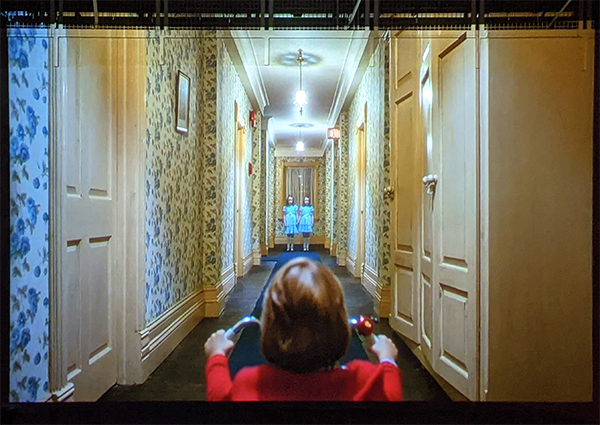
It’s weird that the winter is already halfway over but I’m sure that the second half will be just as much fun as the first!
An Evening At Mark’s
Jun 18, 2021
Aka Why I’ve Been So Busy
Here at the South Pole, we make our own fun. Most all of the community events are things that someone here enjoys back home and wants to share with the rest of the community. So, for me, it was almost a no brainer to try putting on an interactive/immersive theater performance. Now, I have no background in theater or acting but I’ve enjoyed interactive theater for a long time and wanted to try my hand at it. I was able to find some likeminded people here and, together, we formed South Pole Interactive Theater.

At first, we kept everything hush hush as we spent hours secretly planning and practicing for our debut event: An Evening At Mark’s (I was told later that no one had any idea what we were up to!). The show was to be one part casino/nightclub party, one part spying, and one part murder mystery. We had so much fun coming up with characters and backstories and secret clues for our audience to find (and practicing our dramatic death scenes!)

In the dead of night, we snuck around the station leaving invitations to the event (and explaining what it was) on everyone’s doors. Part of me was worried that it would be too weird and that no one would come but, as I’ve been told many times, I worry too much. The evening was absolutely awesome (even though almost nothing went to plan!) and everyone I talked to said they had a great time (quite a few people even asked when our next show would be!). Unfortunately, I completely forgot to take any pictures, I was too busy being a spy!
For the immediate future I think all of us involved are looking forward to some time to relax but my mind is already working on what we can do next!
It’s Aurora Season!
May 5, 2021
Auroras! Auroras! This wonderful season when we look to the sky for a very good reason!
I was doing my weather observation one night when I noticed what looked like faint smudges of light in the sky. At first I thought I was seeing things but, to my wonder, they began to grow and become brighter. I stared in amazement at seeing my first ever aurora! Once I was sure of what I was seeing, I radioed out “I’m not sure how long they’re going to last, but there are some auroras out here.” I was almost immediately joined by half a dozen other Polies excited for the first auroras of the season. I couldn’t stop looking at the sky, occasionally jumping up and down because I couldn’t contain my excitement.
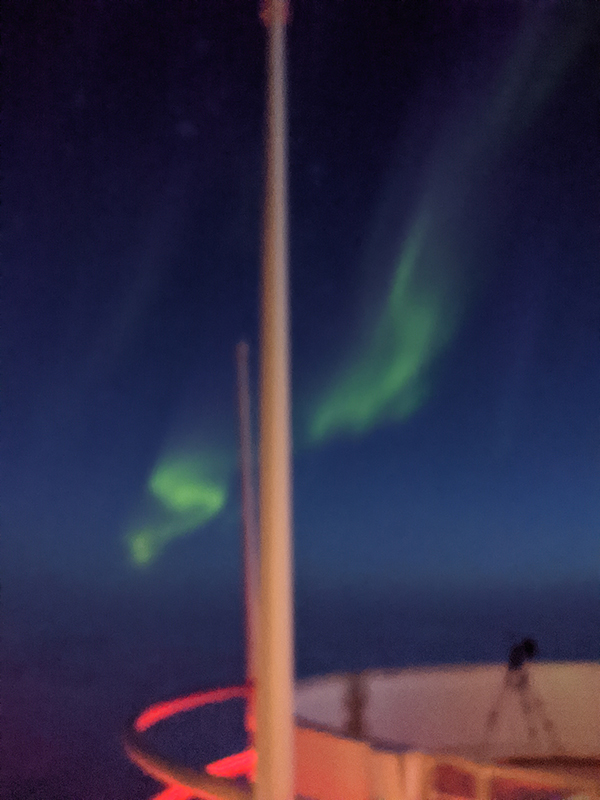
Over the next few days we were rewarded with more and more breathtaking displays. While I’ve seen some of the absolutely amazing pictures that people were able to take my own attempts have been somewhat underwhelming. Though, I’ve got some time to work the kinks out so I’m not worried, and, until then, I’ll just enjoy the show.
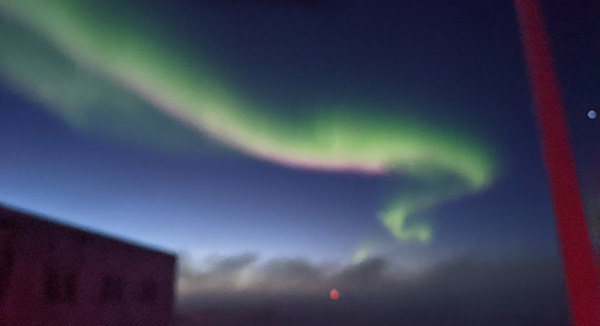
Aurora season brings a bit extra excitement for me because, as the Aurora tech, roughly half of my job is maintaining and monitoring the different aurora experiments on station. Once it got dark enough, each of the different PIs reached out asking me to turn on their cameras and start sending their data north. One of the cameras has a highly sensitive photo multiplier which can get burned out very easily if it is exposed to too much light (it has to be turned off when the moon is out and full because it’s too bright!). This also means that we have to cover all of the windows on the station and only use red lights outside. There is a long tradition of painting the large pieces of cardboard we use to cover the windows; I was pretty happy with how my contribution turned out!
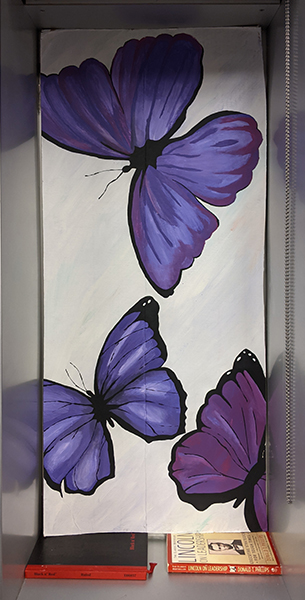
Goodnight Sun
Apr 20, 2021
One of the biggest events here at the South Pole is the sunset and we celebrated the whole weekend with a bunch of activities. We kicked things off with a sunset cocktail themed community hour (co-hosted by yours truly). Afterwards we all gathered together to watch Behind the Curve, a documentary about the ever-growing flat Earth community, which was a little bit surreal considering that we’re at the South Pole and the sun was about to set (two things that are not really possible if you believe in a flat Earth).
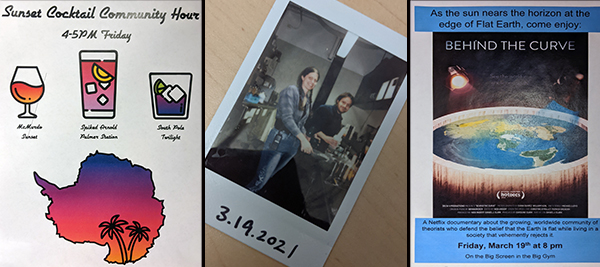
The next day our galley staff once again outdid themselves putting together an absolutely delicious Sunset Dinner for all of us. Normally for big celebration dinners we cover the windows but for this one we decided to leave them open to enjoy the last bits of light we would be getting. Once we were all thoroughly stuffed, we rolled ourselves down the hall to the big gym where we had set up over a dozen mattresses for a slumber party which was to include face masks, nail painting, a showing of Mean Girls, and other traditional slumber party activities.
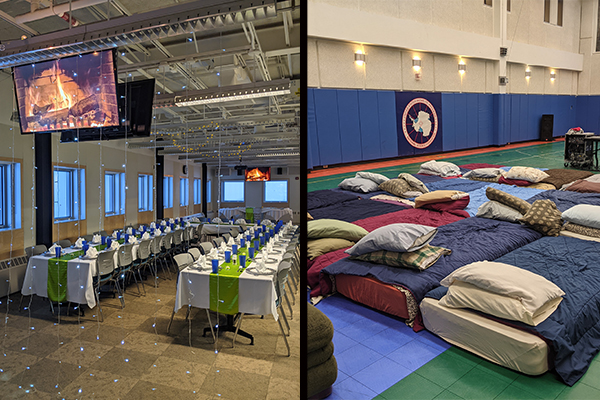
I was able to get a few more pictures of the sun before it set as it was getting closer and closer to the horizon. One of my favorites was when it was passing by one of the telescopes and I was able to catch it right behind the dish.
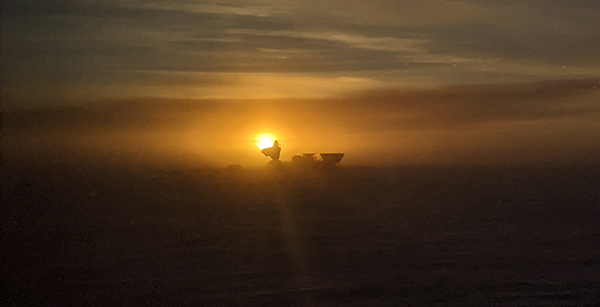
Unfortunately, on the day of the actual sunset, the visibility was low and we weren’t able to fully see it (silly blowing snow!). I did my best though!
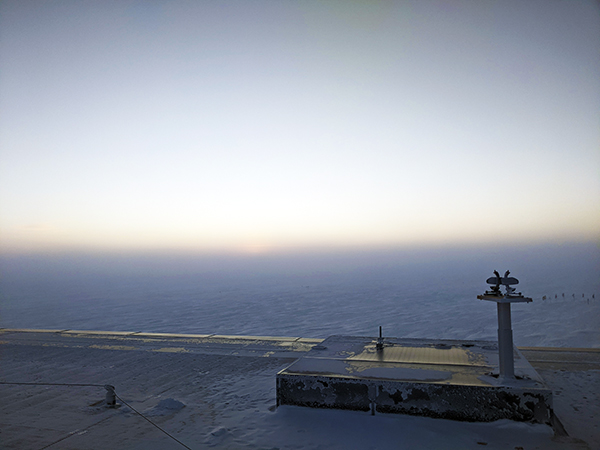
However, the weeks following the sunset were amazing! The sky cleared up and we were able to see all the way to the horizon. There was a least a week of gorgeous colors and skies. And a weird thing happens where, after the sun sets, its light continues to reflect and refract off of the clouds and atmosphere and it’s almost like you can still see it.
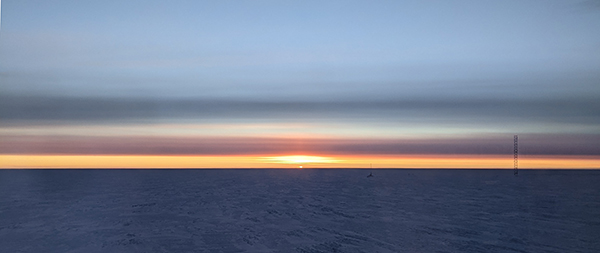
I don’t know that I will miss the sun (5 months of constant sunlight can get a bit oppressive) but I will definitely miss the weeks of sunset skies.

P.S. South Pole Triple Crown Update
Miles: 180 (20% complete)
Weights: 425,880 lbs (31% complete)
Beer Cans: 270 (48% complete)
The Sun Is Getting Real Low
Mar 19, 2021

At the South Pole, there is effectively one day per year; the sun sets in mid-March and rises in mid-September. Some quick maths will tell you that this means that each day here is somewhat the equivalent of 4 minutes of a ‘normal’ day back home (at least in terms of the height of the sun above the horizon). What this means right now is that we’ve been having sunset-esque skies for almost two weeks and should (in theory) keep having them for a few weeks after the sun officially sets.
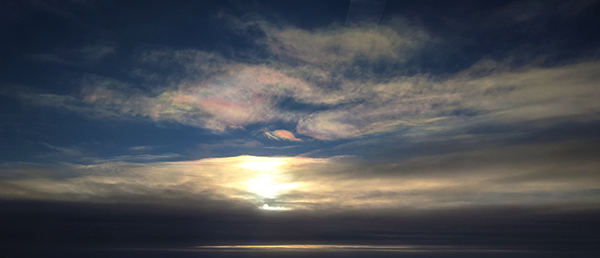
Everything is starting to take on an eerie twilight quality that I just can’t get enough of. I am constantly looking out the windows to see what cool new things the light and snow are doing. One of my new favorites is when the drifting snow looks little flowing rivulets along the ground. It’s hard to describe and even harder to take a photo of but I could sit and watch it for hours it looks so cool.
I have also enjoyed watching the shadows get longer and longer. The shadow of the station has gotten to be over 100 yards long and reaches all the way to the ceremonial pole.
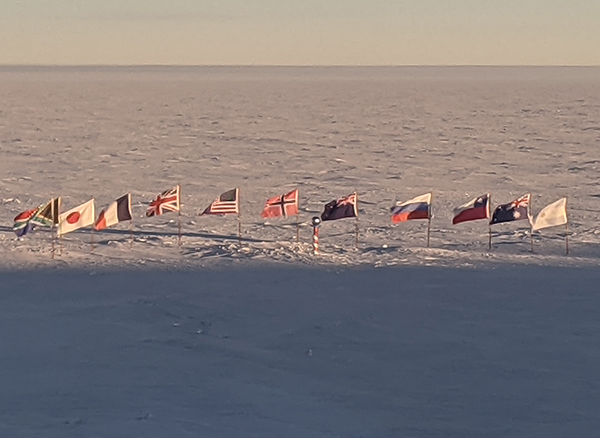
Soon we will say farewell to the sun for six months. I, personally, am excited about all the new sights and experiences that the night will bring. I have missed seeing stars and can’t wait to see my first aurora!
P.S. South Pole Triple Crown Update
Miles: 77.2 (9% complete)
Weights: 164,175 lbs (12% complete)
Beer Cans: 130 (23% complete)
My (Not So) Secret Life As A Fuelie
Mar 14, 2021
One of my favorite things about the South Pole is the opportunity to volunteer for all kinds of things that I would otherwise never get to do. Probably one of the more unique of those things is getting to fuel airplanes!
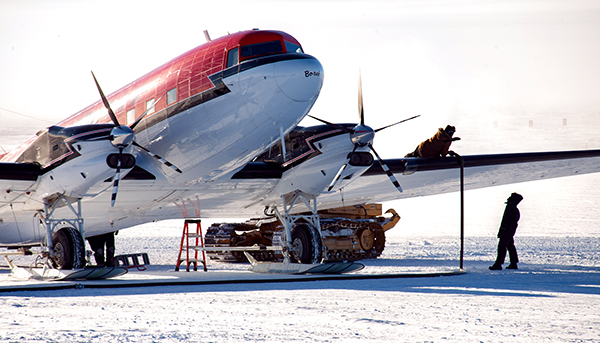
Photo courtesy of Josh Veitch-Michaelis
Early on in the summer season a few of us were recruited to help out with the various fueling tasks around the station. This was partly to help out the fuels foreman who, for most of the summer, was on his own, and partly to prepare us for the winter when he would be long gone. In the beginning he walked us through everything we needed to know but before we had the handle of it and by the end of the summer he had put me in charge of the flight deck!
Each day that a plane was coming in, my fellow fuelies and I would go out to the pump house to recirculate the fuel and get a sample to take back to the lab for testing. I learned how to do the tests to ensure that our fuel met the standards necessary for the planes. Most of the time the samples passed but a few times we had to switch fuel tanks because the sample from one of them failed!
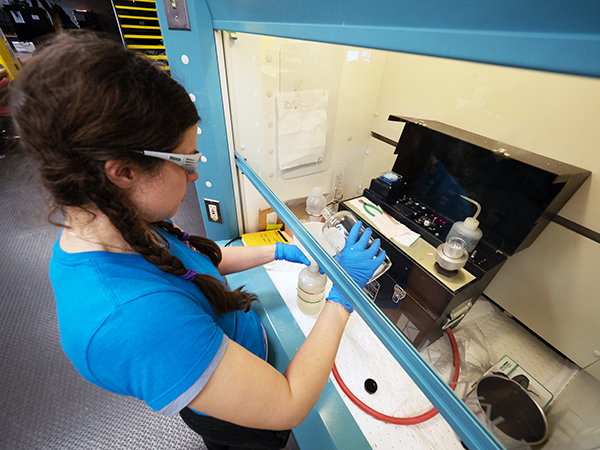
Photo courtesy of Josh Veitch-Michaelis
Then, thirty minutes before the plane was scheduled to arrive, we would go out to the fuels barn to wait and watch for its arrival. After the plane had landed and made its way to the fuel pit, one of us would drag the hose and grounding cable out to the flight attendant while the other would wait in the pump house for the signal to start fueling.
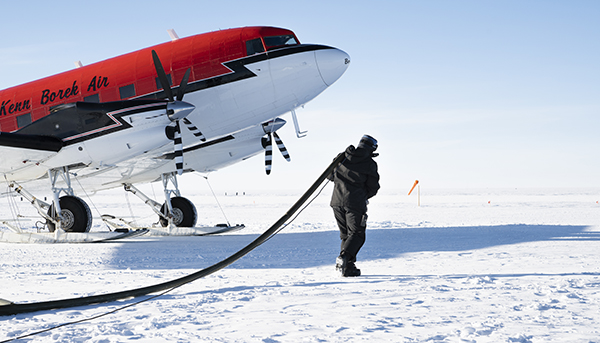
Photo courtesy of Martin Wolf
There were several not-too-complicated hand signals that we used to communicate between the plane and the pump house since it’s very noisy inside and there was no way you could hear anyone.
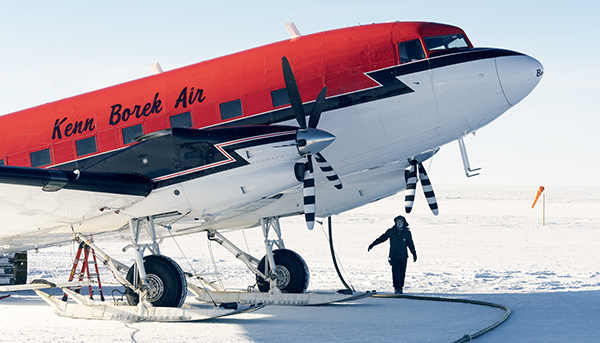
Photo courtesy of Martin Wolf
Once the plane was done fueling, one of us would drag the hose back to the fuel tank while the other recorded how much fuel the plane had taken (there was a meter in the pump house but we also climbed on top of the tanks to get a dip measurement as well).
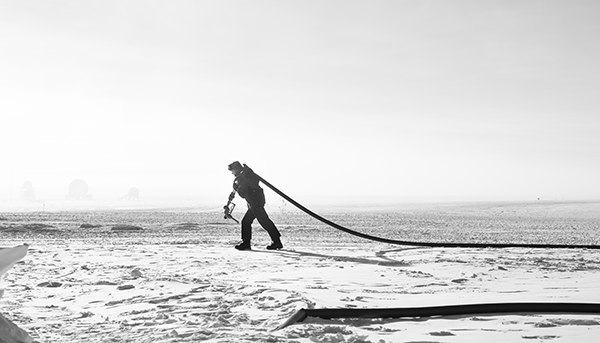
Photo courtesy of Marin Wolf
What followed was usually a good bit of waiting (in the warmed fuels barn) while cargo finished loading and unloading the plane and outbound passengers boarded. We made sure to wait until the pilots had started the engines, taxied, and taken off before heading back to station, just in case anything went wrong and they needed help (thankfully all the flights during the season went off without a hitch!).
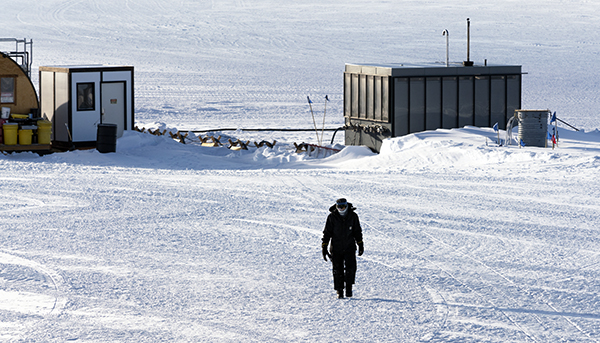
Photo courtesy of Martin Wolf
Now that the station has closed, the fuel pit has been packed up and taken to the end of world where it will live for the winter. The next time it will be used will be when the first flight comes through at the beginning of next summer. I’m already a little anxious about it; hopefully I will still remember everything when the time comes in seven months! Getting to be a fuelie has been one of the highlights of my time here; it was fun and challenging and something I would truly never get to do anywhere else.
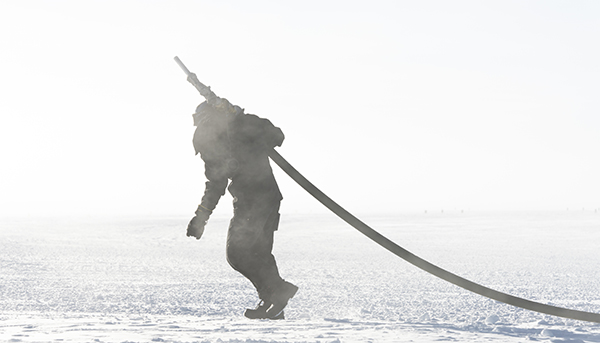
Photo courtesy of Martin Wolf
P.S. South Pole Triple Crown Update
Miles: 52.2 (5% complete)
Weights: 112,300 lbs (8% complete)
Beer Cans: 105 (18% complete)
Codex – The South Pole Triple Crown
Feb 27, 2021
Aka Masochism At Its Best
Every year (though I’m not sure how far back the tradition goes) a few insane Polies challenge themselves to complete the South Pole Triple Crown. This involves three physical challenges that must be completed between when the station closes in February and opens again in October (roughly 250 days).
- Run to McMurdo: Run/Walk/Row/Ski/Traverse a cumulative distance equal to the distance between the South Pole and McMurdo (835 miles).
- Lift to McMurdo: Lift a cumulative weight equal to the cargo (and the average fuel) brought in by flights and SPoT (1.36 million pounds).
- Climb Mt Everest: Climb the vertical tower (affectionately called the Beer Can) until you have reached the same altitude that you would by summiting Mt Everest (557 times).
Evidently I’m one of the crazy ones, you’re shocked I’m sure.
There are handy sheets put up to help track everyone’s progress which are definitely intimidating to look at right now (there’s so much to go!).
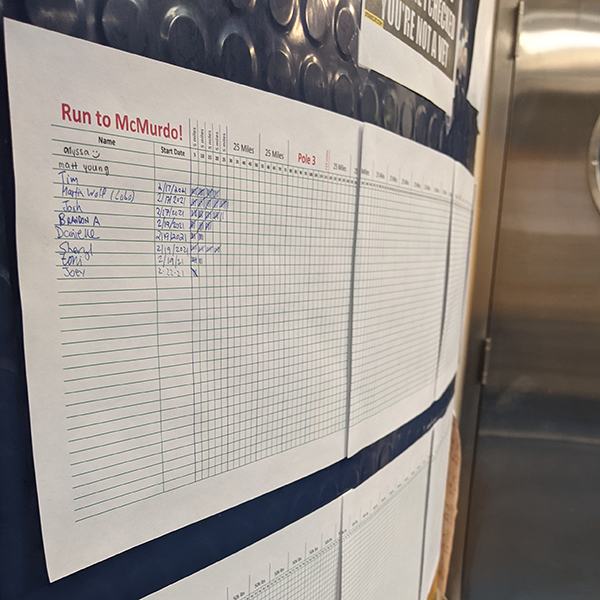
I don’t know that I’ll make it but I’m going to give it my best shot. And hey, I didn’t know I could complete a half marathon either but here we are!
And Then There Were 39
Feb 22, 2021
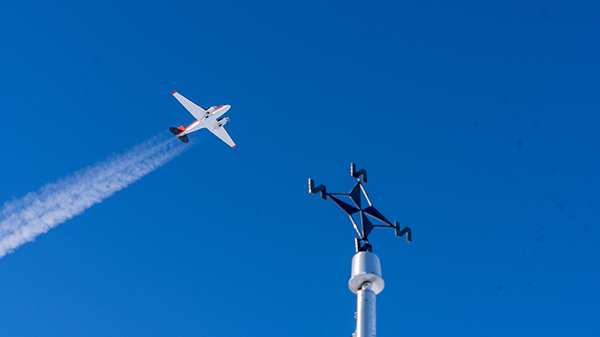
Photo Courtesy of Jeffrey Keller
And so it has come to pass that the final members of the summer crew climbed aboard the last Basler heading north and left behind a crew of 39 to run the station for the winter. While the previous flights coming and going had garnered little attention (any passengers in and out were greeted or farewelled inside the station and the only ones on the flight deck were those handling fuels and cargo), a crowd gathered on the observation deck and at the flag line to send off this last flight. Now, no one will come to or leave the station for roughly 8 to 9 months.
As is tradition (one I’ve been super excited about since hearing about it), to celebrate the last flight leaving and our becoming the most isolated people on the planet (and maybe the galaxy?) we all gathered in the theater gym to marathon all three versions of The Thing. I had never seen any of them (on purpose once I knew that I would be watching them at the South Pole) and enjoyed something about each one (especially the ‘space carrot’!).
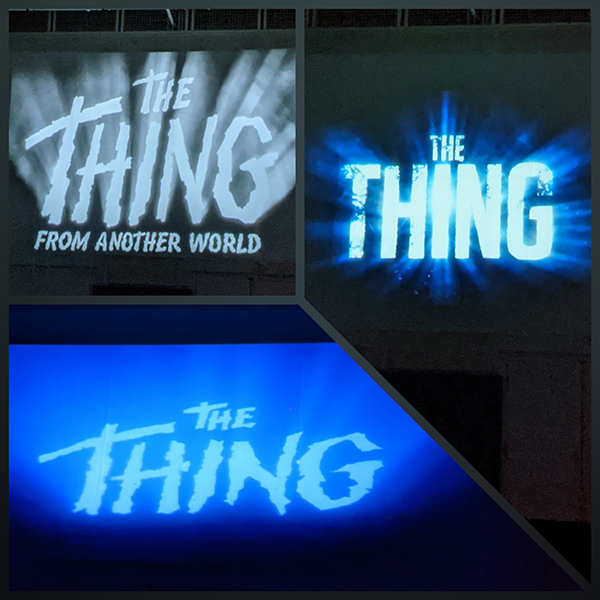
We only have a month or so before sunset but there are so many things to get done before it gets dark. Here’s to hoping it warms up just a little bit (so that the vehicles can run) for a few days.
Whew, what a month!
Feb 17, 2021
Or a string of vignettes.
The last month has certainly been a crazy one here at the bottom of the world. After all the holiday festivities wrapped up it was crunch time to finish all the summer projects before station close. Perhaps the largest one we completed (taking over 50-man hours) was digging up equipment for an old science project that needed to be retrograded (where we send projects back home to their loving PIs when the experiment is over). We had a bunch of people volunteer to help with the undertaking and we couldn’t have done it without them! Over the course of three days, we drove out about 3 miles from the station to areas marked only by fading flags to dig up over twenty antennas of various shapes and sizes and their control boxes. It’s hard to believe that before coming here, I had never shoveled, much less dug holes in, the snow!
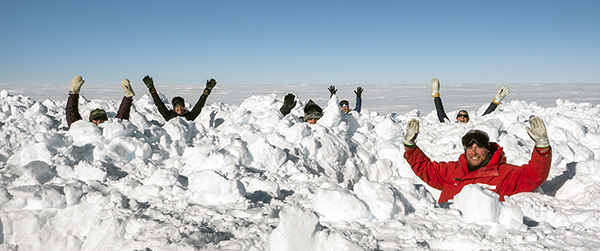
Photo courtesy of Martin Wolf
Speaking of snow, it buries everything, and things that used to be tall eventually are… not. This is definitely the case for the SuperDARN antennas just (grid) east of the station. So, until it’s possible to extend them back up to reasonable height, we needed to make sure that no one accidentally walks into them. This involved making a perimeter of roughly 200 flags spaced about 8 feet apart around all of the antennas. I suppose this would’ve been possible by just measuring the distance but four years of marching band in college (UNC Marching Tar Heels woo!) gave me the ability to take very precisely and consistently sized steps, four of which measure just about 8 feet. So, what did I do but spend an afternoon marching around placing flags (though marching 8 to 5 is a lot harder in the snow!) Who knew that marching band would have such practical applications?
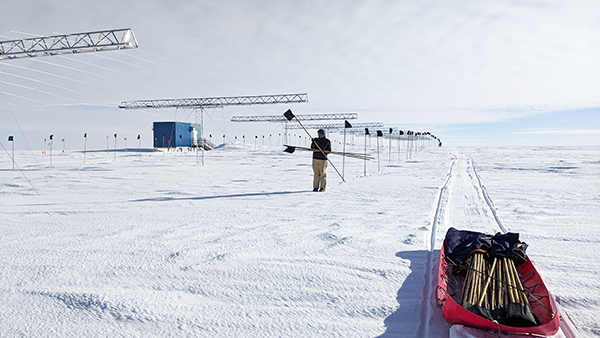
Photo courtesy of Sheryl Seagraves
But my job isn’t all science and playing in the snow. In order to stay sharp and prepared for an emergency, we have continued having fire brigade trainings. Sometimes these consist of station walk throughs so that we are aware of fire extinguisher locations or simply how the rooms we don’t frequent are laid out and what their dangers might be. And sometimes we play dodgeball. In full bunker gear. On air.
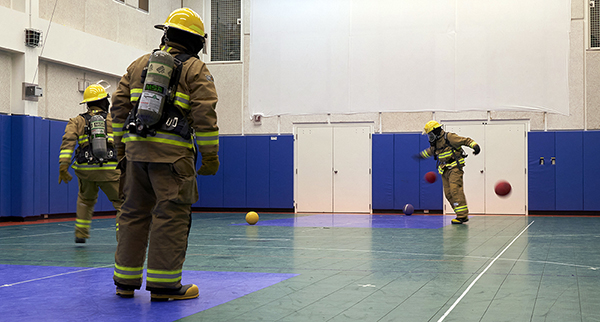
Photo courtesy of Geoffrey Chen
Of course, I wasn’t just busy with work. After all, all work and no play would be pretty dull. My evenings were filled with dungeons and dragons, tv show nights, and board game nights (Saboteur has become a favorite down here). The weekends brought extra fun and I even had the honor of being the official science advisor for the Third First Annual South Pole Head Weighing Contest!
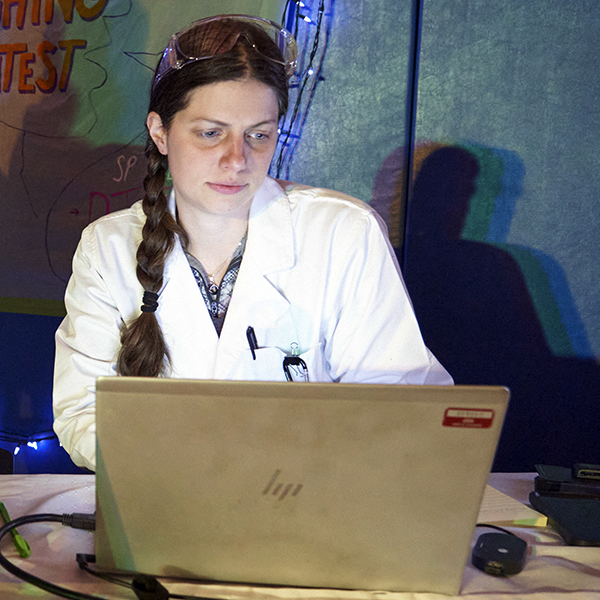
Photo courtesy of Geoffrey Chen
Also, for those of you unaware, cribbage is evidently the card game of choice on the continent. We’ve already had one tournament here at Pole and I think they’ve had one at McMurdo as well. With plenty of people excited about playing and teaching, it wasn’t long before I joined in and now play almost daily.
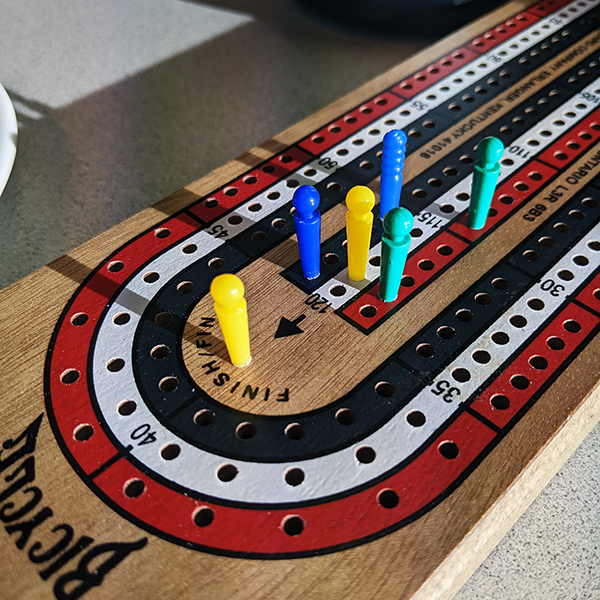
And now for the sad part. As busy and fun as the last month has been, station closing also means that the summer crew is leaving. I’ve had such a great time hanging out with and getting to know everyone here, many of which will stay on for the winter. One of the notable exceptions is actually someone that I knew from college, Dr. John Hardin. As fate would have it, John wintered over last season as one of the grantees supporting IceCube and stayed on over the summer to help the new grantees with their turnover. It had been years since we’d seen each other but so amazing that somehow life had brought us to the same place. He, along with the rest of the summer crew, will be greatly missed.
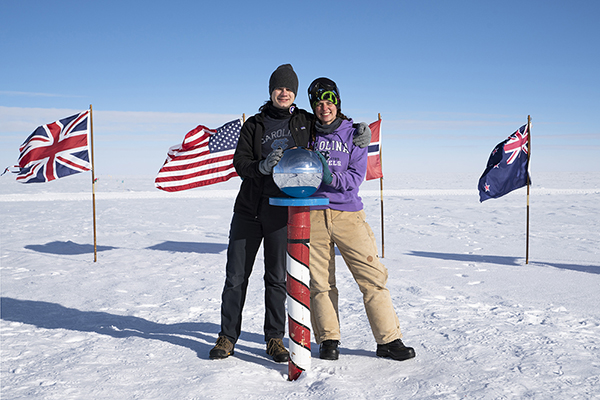
Photo courtesy of Martin Wolf
Danielle Walks a Half Marathon
Jan 18, 2021
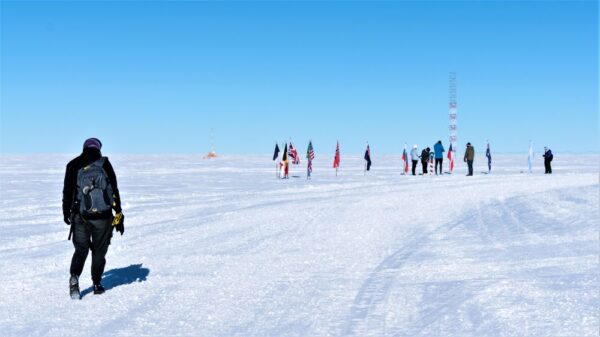
Photo courtesy of Martin Wolf
It was a balmy -18°F Sunday morning as I walked to the ceremonial south pole marker which was to serve as the start (and finish) line for the annual South Pole marathon and half marathon. The course was made up of a 6.55-mile loop around the station and outbuildings to be completed twice for the half marathon and four times for the full marathon. Halfway along the course, the fuels barn was set up with food and drinks to give the runners (and walkers) a place to refuel, warm up, and hang out before continuing with their race.
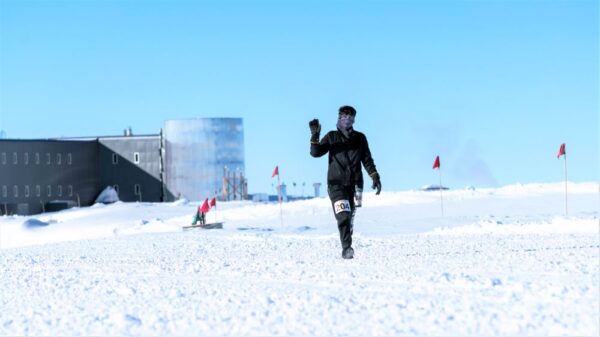
Photo courtesy of Martin Wolf
I had never run a marathon or half marathon before, let alone in the cold, walking on snow, at a physiological elevation of over 10,000 ft, so I had no idea how far I’d actually be able to go. I decided to just walk as far as I could and see where that got me (I knew if I tried to run I would be too tired to make it very far at all). 4 hours 22 minutes and 3 seconds later I ended up coming in first in the women’s half marathon! I pretty much collapsed right after finishing, I don’t know how those that finished the full marathon did it (one guy even ended up running 90 kilometers!!).
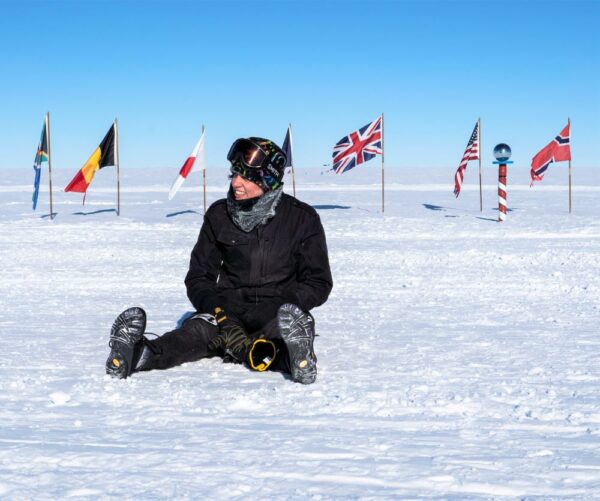
Photo courtesy of Martin Wolf
And my prize for coming in first? 5 extra minutes of shower time to be used between now and when I leave next summer. I’m thinking I will save it for some time in the middle of the winter when I might need a little pick-me-up. In the meantime, I’m looking forward to a few (or several) lazy Sundays before I do that much exercise again.
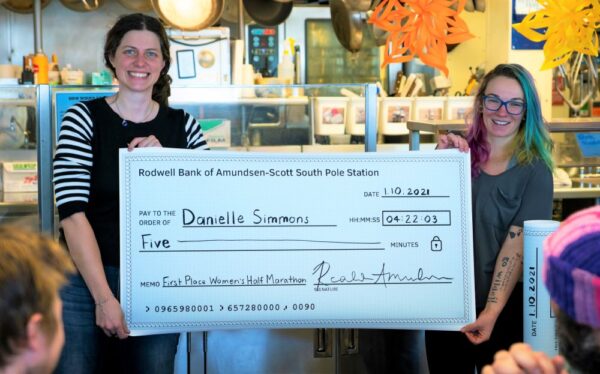
Photo courtesy of Martin Wolf
SPRESSO (Not Espresso)
Jan 16, 2021
5 miles away from the station, down a 30ft ladder into a vault in the snow is the South Pole Remote Earth Sciences and Seismological Observatory (SPRESSO). There are a few different projects that use the vault due to its remote location but the main one is one of the seismic stations for the Global Seismographic Network which monitors earthquakes around the world.
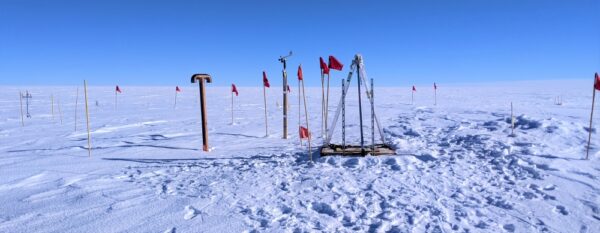
Most of the time the site operates without anyone having to go out there; all of the data and computers can be accessed remotely which means I can check to make sure everything is ok from the comfort of my desk. But sometimes things go wrong, or equipment stops working, or we just need to check how squished the vault is getting by the snow and we have to drive out to the site (going 7mph – tracked snow machines are not known for being speedy).
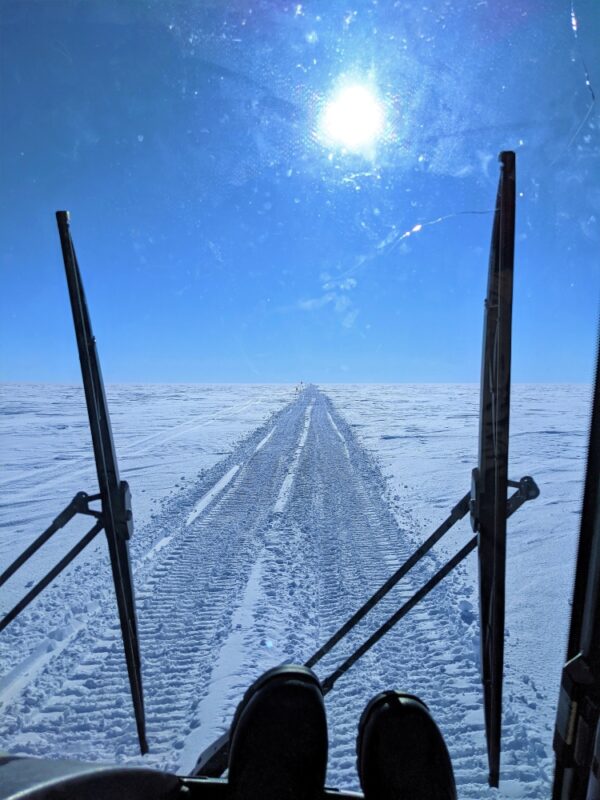
Since it was our first trip of the season, the resident safety engineer came with us (to check the oxygen levels) and well as the firefighter captain (to rescue the rescue tripod that was left at the bottom of the vault). We were lucky that the vault hatch had not been buried since last year (a state that would unfortunately not hold true for the other 6 vaults I would have to enter). After the safety checks were done, I headed down to take some deformation measurements and take care of some of the equipment.
A few days later we went back out to check the six vaults that are used to measure the expansion of the power and information cables leading out to the vault. A few of these were buried under 2 to 3 feet of snow. Thankfully, there were quite a few people who volunteered to help with the digging. There aren’t a lot of opportunities to drive so far from the station and it’s pretty cool to have an unimpeded view of the Antarctic plateau.
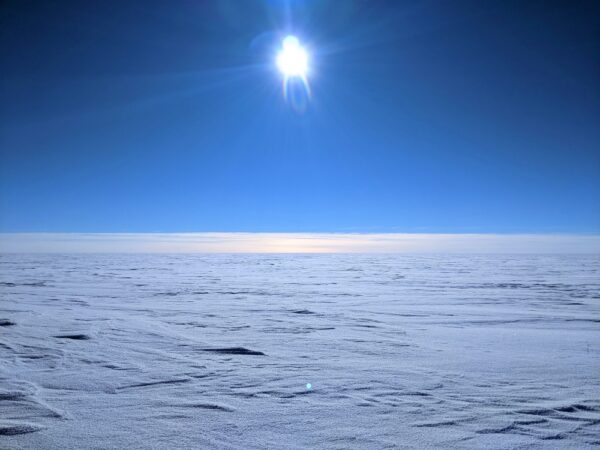
Unlike the main vault, which is more like a buried building, the expansion vaults consist of four plywood walls and often a ladder of just 2x4s leading roughly 12 ft to 15 ft down into the snow. At the bottom there are reference markers that are used to measure how much the cables have moved since the vaults were installed a decade ago.
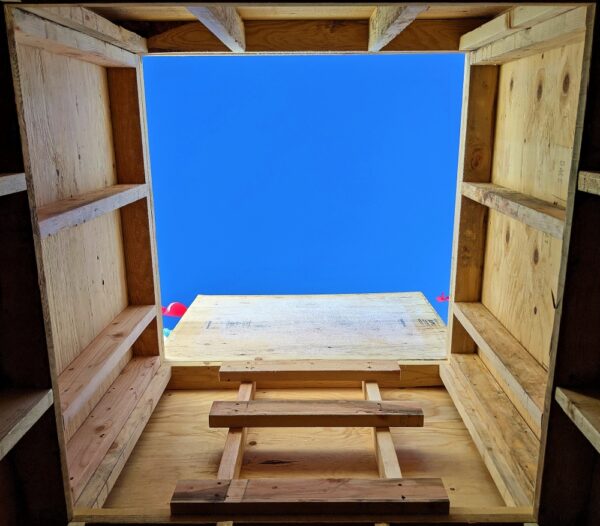
If all goes well, I won’t be needing to make another trip out to SPRESSO until next year when I turn over my position to the next Aurora tech RA. While digging up the vaults and climbing up and down (what felt like a million) ladders was exhausting, it was definitely fun and something I would never get to do anywhere else!
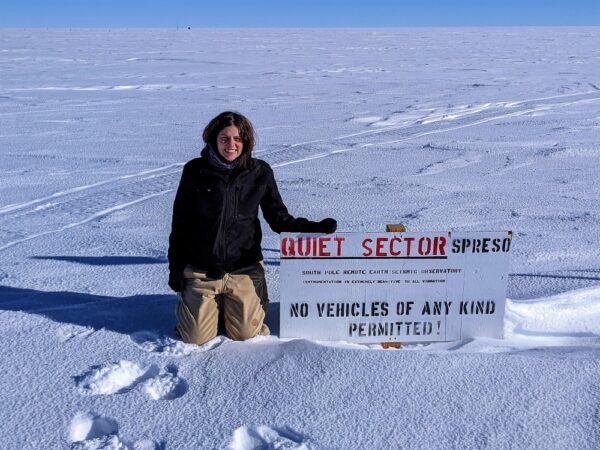
My First White Christmas
Dec 31, 2020
I suppose that most people’s first white Christmas is not at the South Pole, after all, there are easier ways to be somewhere snowy in December. Nevertheless, here I am, seeing snow on Christmas for the first time while at the bottom of the world.
The holidays were a very busy time here at the South Pole. The festivities kicked off with a gym-turned-movie-theater showing of the Nightmare Before Christmas on December 23. This was another first for me as I had somehow avoided seeing it my whole life, though I surprisingly knew many of the songs. I suppose a decade of Mickey’s Not So Scary Halloween and Very Merry Christmas parties will have that effect.
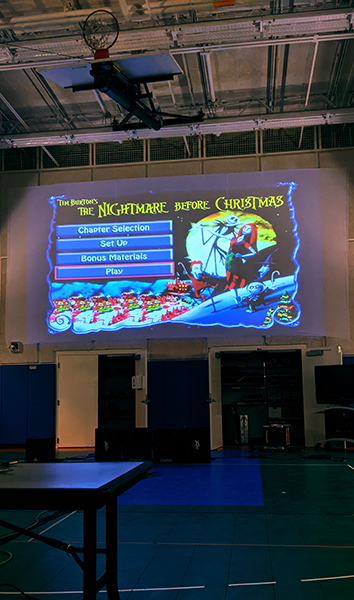
On Christmas Eve we had an open mic concert where the many talented people on station read poetry, told stories, sang songs, and played instruments; there was even a seven-piece ukulele orchestra! It even got a little scary (mostly hilarious) when Krampus and Santa Claus appeared during an acted-out poetry reading.
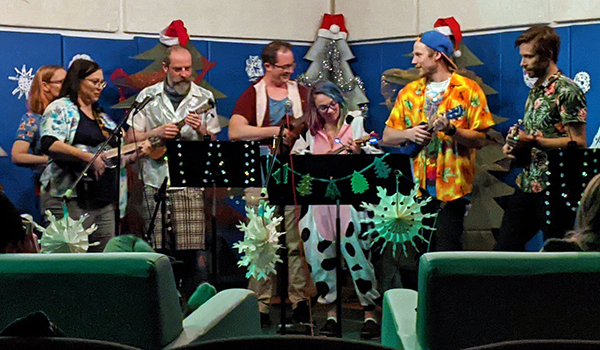
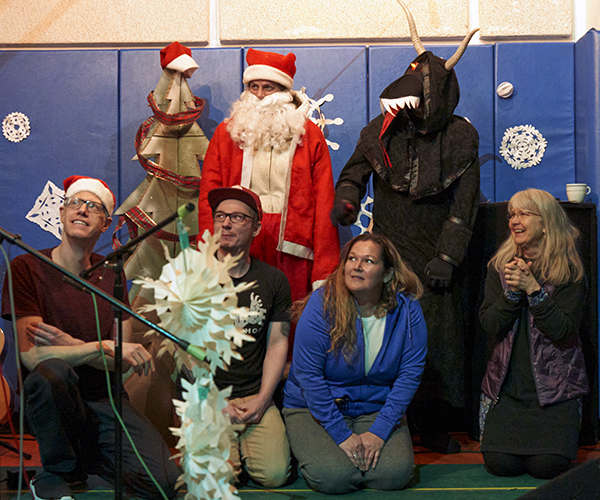
Photo courtesy of Geoffrey Chen
Christmas day brought brunch mimosas and intracontinental caroling. Fueled by mulled wine we, along with carolers from McMurdo and the WAIS (Western Antarctic Ice Shelf) divide field camp, sang carols to each other across the continent. I can’t recall ever having gone caroling before but sending out songs over radio waves and hearing others call back doing the same was a pretty magical experience.
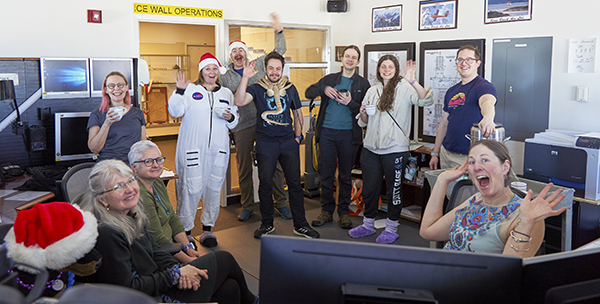
Photo courtesy of Geoffrey Chen
What followed was more gym-turned-movie-theater showings of holiday classics such as Die Hard and Lethal Weapon. The movies finished just in time for me to run to my room and change out of my pajamas into something festive (complete with Christmas lights!) for Christmas dinner. The galley once again outdid themselves, treating us to steak and lobster and an entire waterfall table full of delicious Christmas treats.
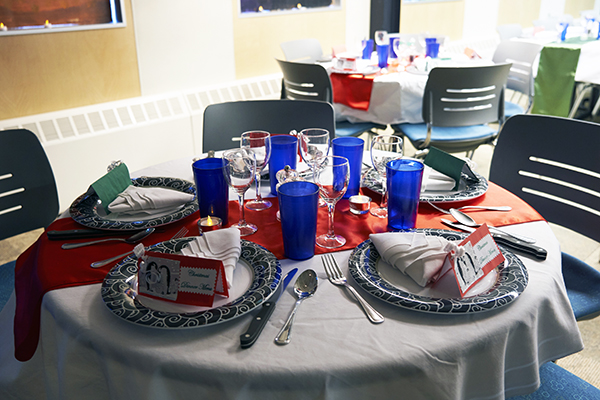
Photo courtesy of Geoffrey Chen
The festivities didn’t end on Christmas though. On the day after Christmas, I participated in the annual Race Around the World with several other onesie clad polies (I was a unicorn!). Starting at the ceremonial South Pole we raced about two miles around the geographical south pole and the station while being cheered on by those dancing along to music on the ‘party barge’. It was a lot of fun and definitely some good practice for the South Pole marathon coming up in a few weeks’ time.
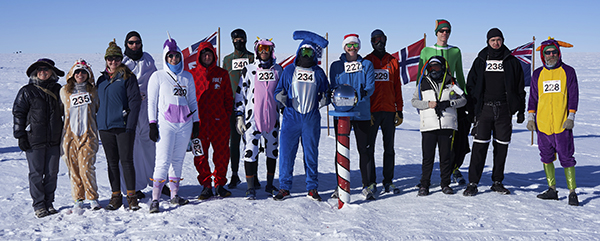
Photo courtesy of Geoffrey Chen
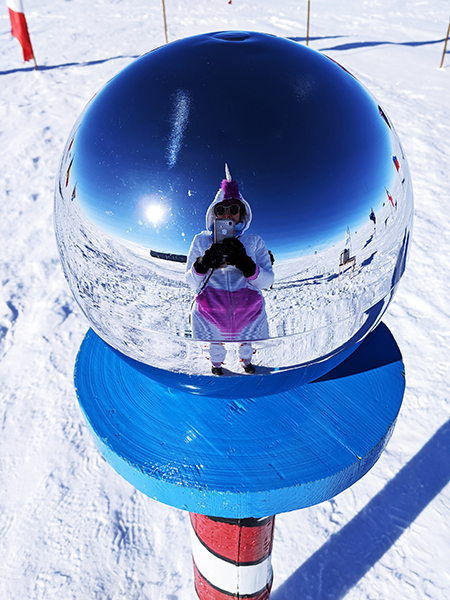
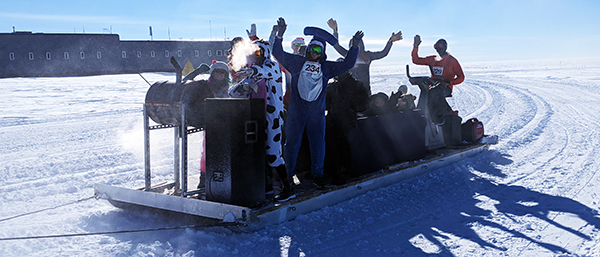
After the race I came inside and curled up with a cup of tea and my Christmas coloring book for some relaxing before our Secret Santa gift exchange. We evidently had a record number of participants and the presents varied from bottles of wine to hand crocheted gloves and hats to a boxed whiskey glass set (made from the bottoms of wine and beer bottles).
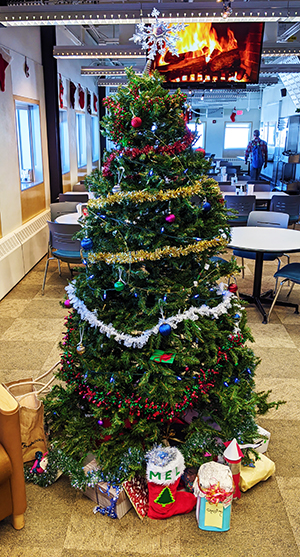
And with that I want to wish everyone a Merry Christmas and a Happy New Year!
Our Sisyphean Task
Dec 22, 2020
Snow is constantly being blown across Antarctica and accumulating across the plateau. This is why the old dome station was slowly being buried and the new elevated station was engineered to be raised. Snow management shows up in a lot of different ways whether it be digging up buried buildings and equipment, literally pushing snow up a hill, or measuring the slow but inevitable accumulation.
East of the station, near the SuperDARN antennas, there is a grid of stakes planted in the snow. Once a month (even in the winter!) these stakes are used to measure the snow depth. One of my first bonus tasks when I got here was to travel out to the snow stakes with the meteorologist to help with the measurements. While it’s close enough to walk to, we opted to take a snowmobile which was way faster (and way more fun!). The routes to all the outbuildings are flagged so that no one gets lost or runs over (potentially buried) equipment. Later in the summer I’ll be going out to reflag some of the routes because (surprise) the flags are almost completely buried.
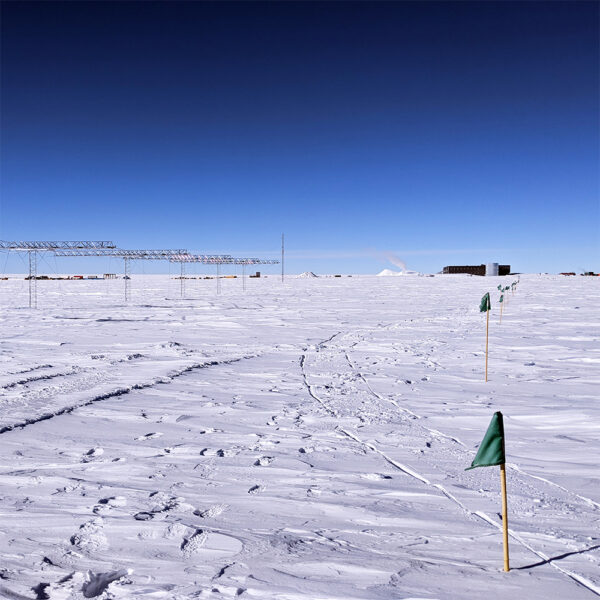
In addition to helping measure the snow stakes for meteorology, I also volunteered to help the IceCube scientists measure the snow depth above their detector. This was a considerably greater undertaking since the detector resides under snow and ice covering roughly a square kilometer in size. So, we borrowed a little snow vehicle (called a Piston Bully for reasons unknown to me) and spent the day driving in zigzags measuring the height of over 160 poles.
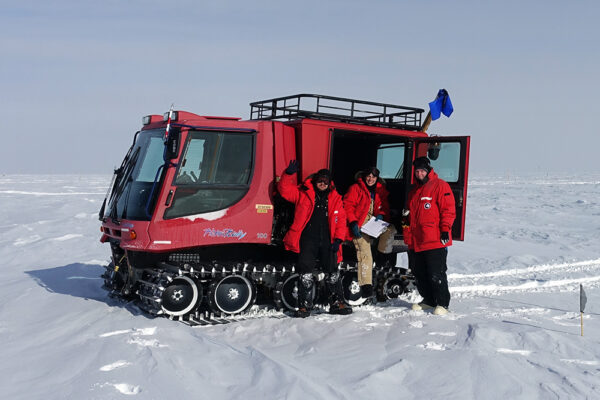
Image courtesy of John Hardin
If the poles were a reasonable height, we just recorded their height and moved on to the next ones.
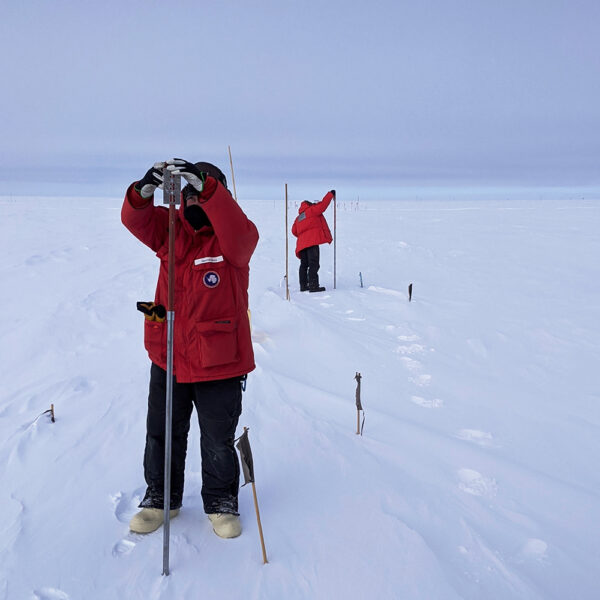
If they were too short (in danger of being buried), we added extension poles. And if they were too tall… well… we did our best.

Image courtesy of John Hardin
About halfway through the day the weather cleared up a bit and we were rewarded by a pretty awesome solar halo!
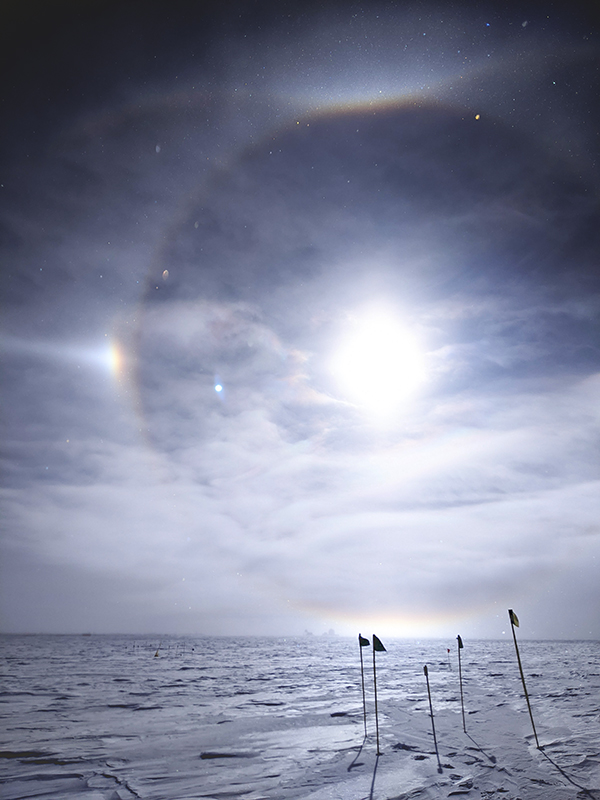
And then, because it’s what you do when there are halos…
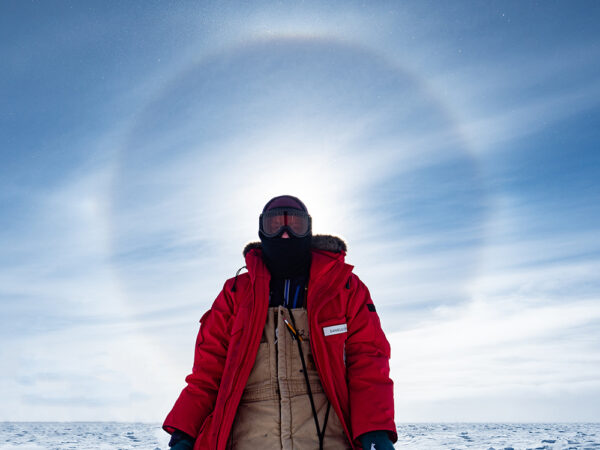
Image courtesy of Josh Veitch-Michaelis
Busy Busy… Penguin
Dec 18, 2020
The last two weeks have been a whirlwind. My days have been filled with work and hanging out with my fellow Polies.
First, work!
There are six experiments that I maintain (though three of them won’t get turned on until March or April when it starts getting darker). The ones that are running have daily checks that I perform to make sure everything is going smoothly. In addition to those, I also help the meteorologist observe the weather and launch weather balloons. For each observation, I climb up to the roof to get a 360 view around the station. I can see for miles and miles and miles and miles….

When there are no planes on their way, we perform four weather observations a day. But when there are planes on their way, we make hourly observations and sometimes even more if the weather is changing quickly. Plane days are very busy days.

Now, since I’m a professional weather observer and all, I feel I should give a weather report! The temperature has been between -10 and -25 Fahrenheit with a windchill around -40 Fahrenheit. It’s probably 50/50 cloudy and sunny with only a few completely overcast days. The sun never sets, it just circles around the sky (it makes me want to make a 24-hour sundial). It never really snows, I think it’s actually too cold for snowflakes to properly form. We do, however, get ice crystals which are tiny bits of ice that fly through the air and make it sparkle!
Second, people!
After everyone finished getting here and settled in, it was time for Thanksgiving (only about a week late)! Since the population was relatively small (about 80 people) everyone was able to eat at one seating instead of the normal two. Everyone helped to setup and decorate the galley to make it special for our Thanksgiving meal.
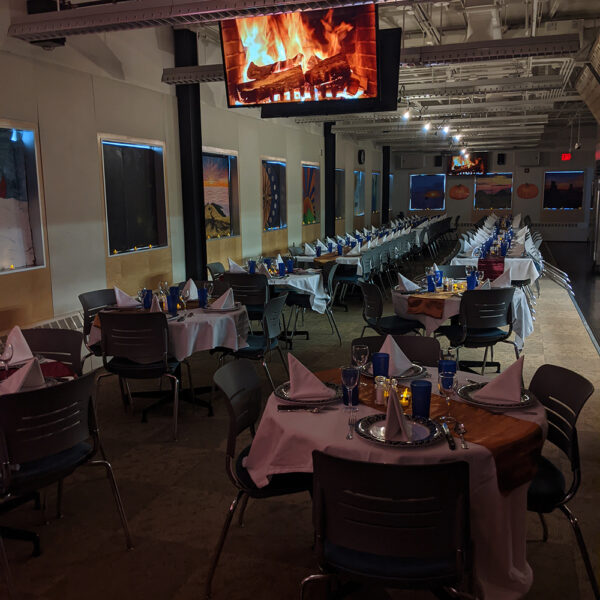
Our galley staff really outdid themselves! There was turkey, stuffing, green bean casserole, sweet potato casserole, rolls, mashed potatoes, cranberry sauce, four kinds of pies (which I didn’t try because I was so full from dinner!), and more!

After dinner everyone chipped in again to undecorate the galley and then partied the night away at the Gobbly Wobbly Dance Party!
To thank the galley staff for their incredible Thanksgiving work, the next Saturday everyone on station pitched in to cook. The facilities department made breakfast, science and IT put together lunch, and cargo and supply finished up with dinner. (I was so busy that I forgot to take any pictures!) It was really fun being behind the counter for a change but also made me appreciate even more everything that our amazing galley staff does for us every day!
90 degrees South
Nov 29, 2020
I had woken up early so that I could go get coffee (well, really I woke up early because my scheduled transport time to the airfield was 0730 but I woke up earlier than that so that I could get coffee). Then the waiting began. Just sitting, watching the transport channel on the tv in the lounge scroll through the scheduled arrivals and departures for the day waiting to see if it was the day.
Then we saw it. ‘Mission Activated’. We all scattered in a flurry to complete clearing out our rooms and any last minute packing before heading up the hill to check-in and be shuttled over to the airfield. It was a beautiful day as we drove out onto the ice shelf towards the Basler that would take us to the South Pole.
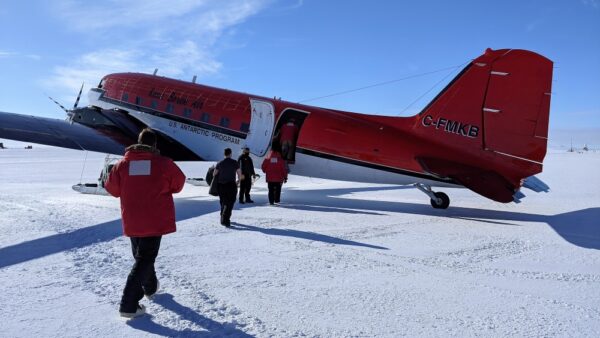
What followed was around four hours of some of the most gorgeous landscapes I’ve ever seen. The pilots flew the plane relatively low (otherwise they would have to put everyone on oxygen), so we were able to get some amazing (and really close!) views of some of the Antarctic mountains. The pictures don’t even begin to do them justice.
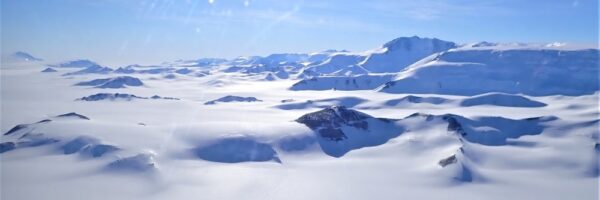
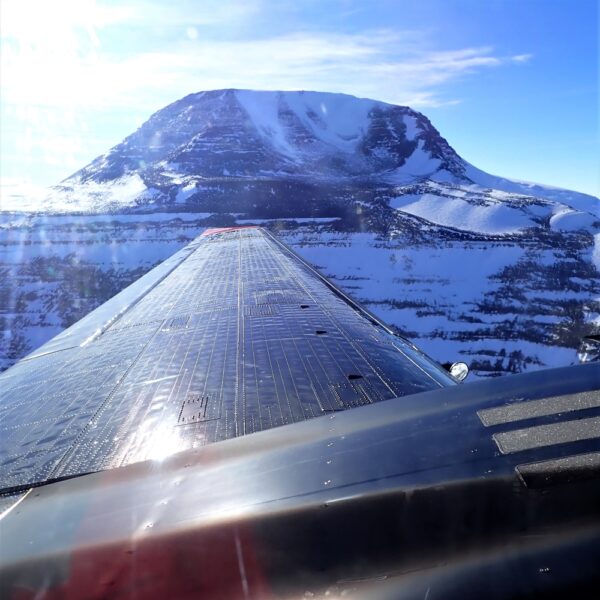
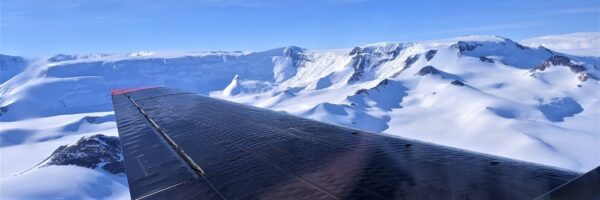
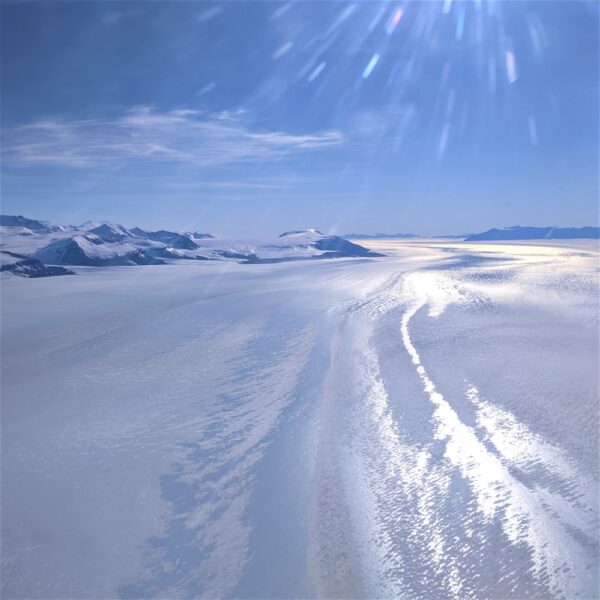
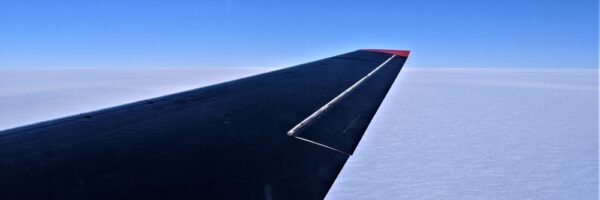
Since we were one of the last planes of passengers to arrive, there was quite the welcome party waiting for us. After a brief discussion on adjusting to altitude (the physiological altitude was roughly 10500 ft when I landed) I was shown to my room so that I could unpack and rest a bit (I can see the Geographic South Pole from my window!). After lunch I got a quick tour around the station (with lots of stops because I kept getting tired, stupid altitude!) and my new office/desk.
The next two days were full of learning all of my responsibilities and getting up to speed on the different experiments I will be running. I was completely exhausted at the end of each day (again, stupid altitude) and crashed into bed after dinner. Hopefully soon I will be adjusted and have more energy, I’ve heard it taking anywhere from 1 week to 1 month. In the meantime I will do what I can, while taking lots of breaks to catch my breath.
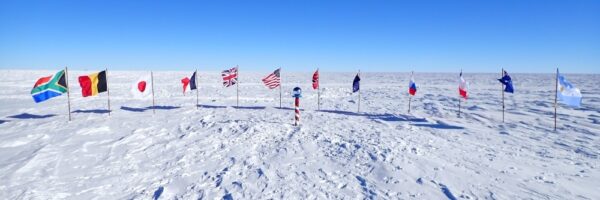
One More Flight
Nov 25, 2020
And just like that my flight is next. After 26 days (out of a scheduled 11) in McMurdo and watching three planes of Polies fly south, this morning it was finally time for me to haul my bags up the hill to be weighed.
For all that it has felt like it was dragging on at points, and that it seemed like we’d never be able to leave, I have enjoyed my time in McMurdo. I have gotten to know the Polies with whom I will be spending the next year as well as some of Townies who I’m sure I will be excited to catch up with when I pass back through McMurdo in a year’s time. I’ve gone on some breathtaking hikes and had such unique, amazing experiences (including a snowmobile ride to the base of a volcano, post coming soon!).

And then I remember, this has only been the beginning. Tomorrow I might fly to the South Pole or my flight might get delayed another week. Either way it’s all a part of the adventure!
I will leave you with these two little guys, who showed up just in time to wish me off.
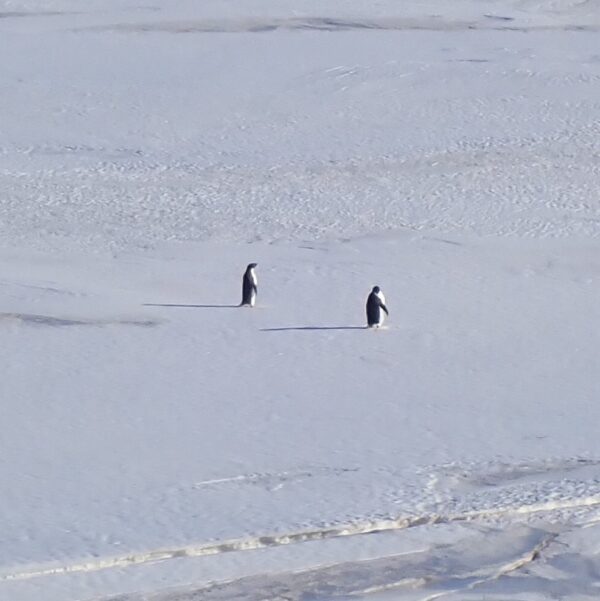
Codex – Scott Base
Nov 24, 2020
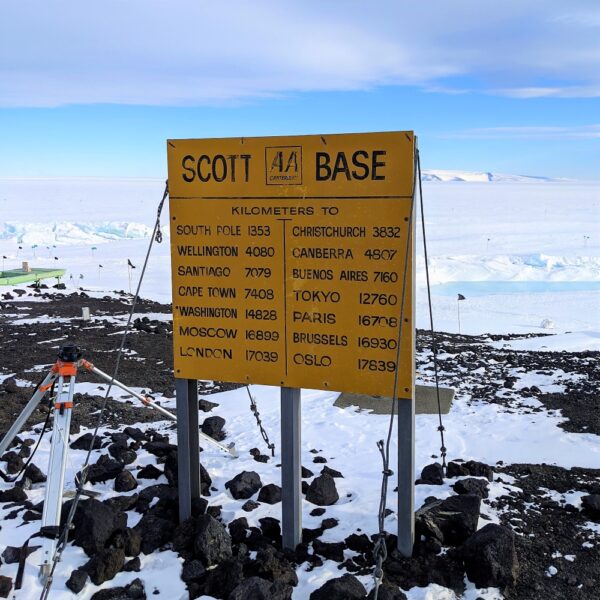
McMurdo is not the only base on Ross Island. Just on the other side of Observation Hill is Scott Base, New Zealand’s station in Antarctica. To get there from McMurdo you can either take the road over the hill or walk around the hill on the ice shelf, and while the road is faster, walking out onto the vast expanse of ice is pretty epic.

Since they are both on Ross Island, McMurdo and Scott Base share a lot of resources including runways and a power grid. There are also events where each base invites the inhabitants of the other to come over and hang out (American Night is very popular on Scott Base!). All of the buildings are green which makes them easy to identify and differentiate from any US buildings.
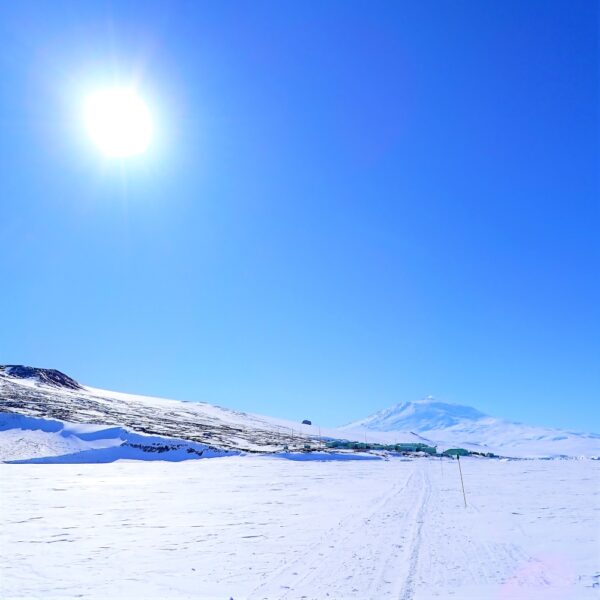
Scott Base is located on Pram Point which is where the sea ice meets the Ross Ice Shelf. The collision of these two bodies of ice causes the ice to buckle and rise creating large ice formation and ridges. Occasionally, when it is safe to do so, you can go on tours to get up close and personal with these structures.
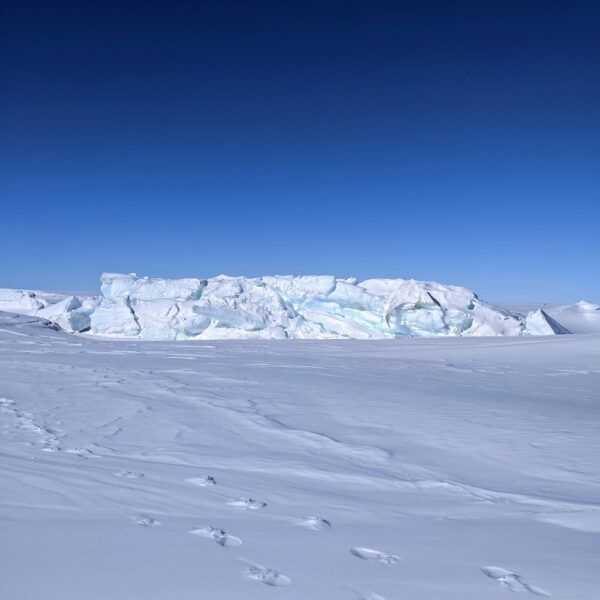
I’ve made it over to Scott Base a couple times, taking both routes to get there (and taking a few vans rides back!). They have a small but well stocked store on base which carries some super warm gear and lots of cool souvenirs. The bar on the base, the Tatty Flag, is very cozy and, unlike the bars in McMurdo, has an amazing view out over the ice shelf.
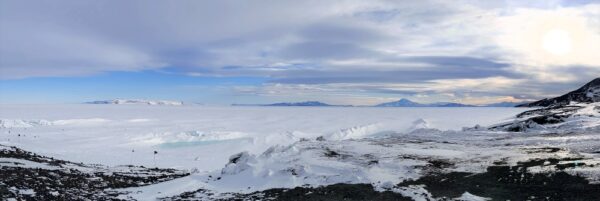
We Are The Fire Department
Nov 20, 2020
McMurdo is home to the Antarctic Fire Department (AFD). Up to a few dozen firefighters live and work here on contracts ranging from 3 to 13 months keeping people safe and putting out fires (usually small ones!) when they arise.
However, there is no fire department at the South Pole.
So it falls to the winterovers to form fire and medical brigades responsible for handling any crises that may occur during the year. Normally, all the volunteers for the fire brigade would meet in Colorado and go through a weeklong fire fighter training course complete with live fire and smoke mazes. But this year is anything but normal, so instead we got to work directly with the AFD to learn the basics of fire fighting and some more specific concerns for fire fighting in Antarctica (we won’t have hose lines or trucks at the South Pole for example).
The first thing we had to learn was how to don and doff our 30+ lbs of gear including hood, boots, pants, jacket, helmet, SCBA mask, and gloves. Then we had to learn how to don our gear quickly (ideally under 1 minute). This mostly involves putting the gear on and taking it off, and putting it on, and taking it off, and putting it on, and taking it off, until it becomes so second nature that you can do it without thinking (which you might not be able to when there’s a real emergency).
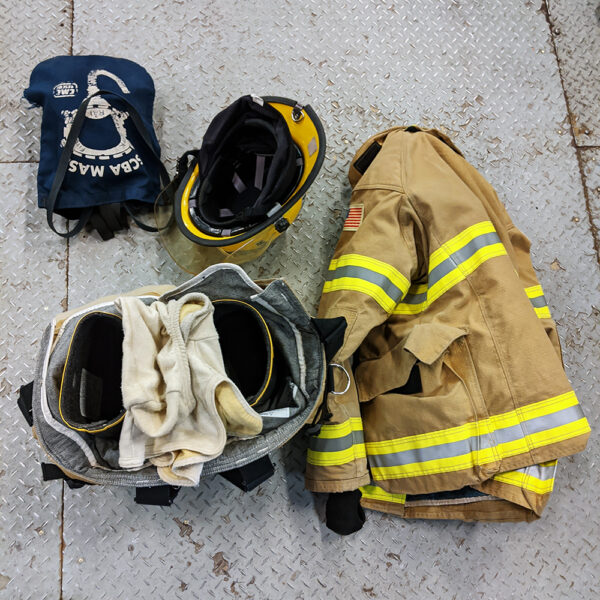
After we could successfully put on the gear, we had to learn how to put on, inspect, and handle the 30 lb air tank that would allow us to breathe in smokey, possibly toxic, conditions. Then we had to practice putting everything on and off and on and off and on and off again. The goal was to get completely suited up and on air in under 2 minutes (I don’t know that I ever quite made it, but I got close a few times!). We also practiced changing our partner’s tank and changing a tank blindfolded!
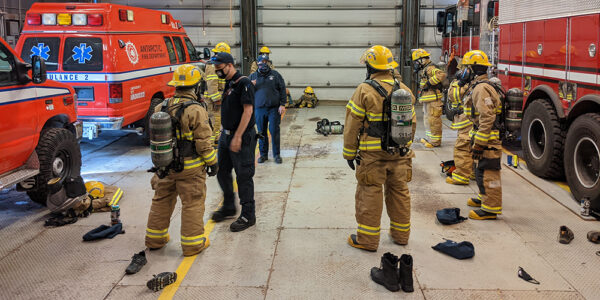
Then the practical exercises began. I had never really thought about it but one of the main things that fire fighters do (besides fighting fires) is search burning, smoke-filled buildings for victims. Depending on the heat and visibility this entails crawling on your hands and knees (because it’s probably too hot to stand up), sounding the floor ahead of you (to make sure it isn’t going to collapse), and searching for any signs of life while (probably) not being able to see a foot in front of your face, wearing 60+ lbs of gear, and not losing contact with your partner (buddy system ftw!). If all of that doesn’t sound exhausting, also keep in mind that you only have about 5 minutes of air and the building is burning down around you, so you have to go FAST.
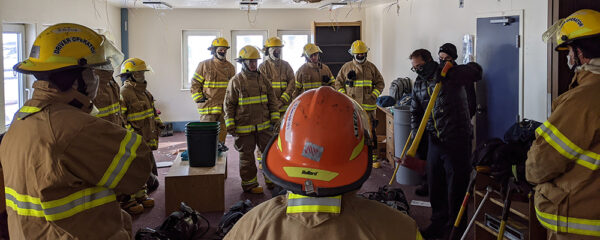
But what do you do when you actually find a victim? You drag them out! We learned a bunch of different ways of effectively dragging people to safety. I found that I was pretty good at pretending to be unconscious so that my teammates could practicing dragging me and significantly less good at doing the dragging myself (I am very glad that I should always have a partner with me to help!).
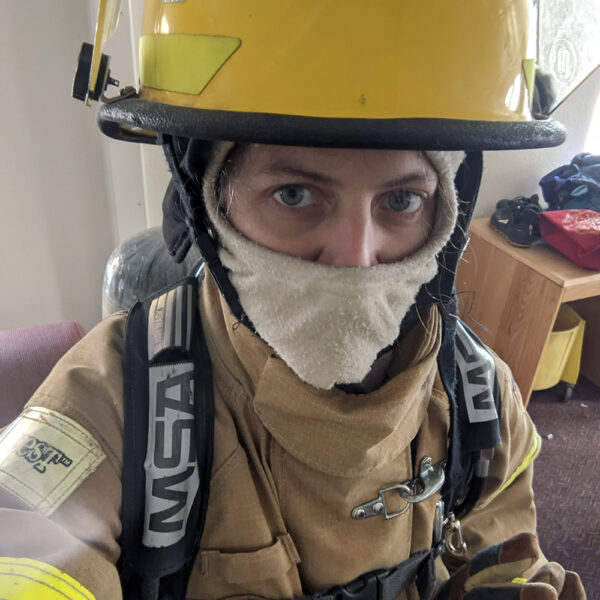
The official training wrapped up with a simulated mass casualty incident so that we (the fire brigade) could integrate ourselves with the medical brigade which had been going through their own training throughout the week. It was super chaotic but so cool to get to see how the skills we’d been learning would work in a real-life scenario (there was even fake smoke so we could get a feel for what the limited visibility would really be like!)
Afterwards, a few of us crazies signed up for extra training where we learned how to break open doors and bust through walls (so incredibly satisfying!). We even practiced crawling through holes in the walls while fully geared up!
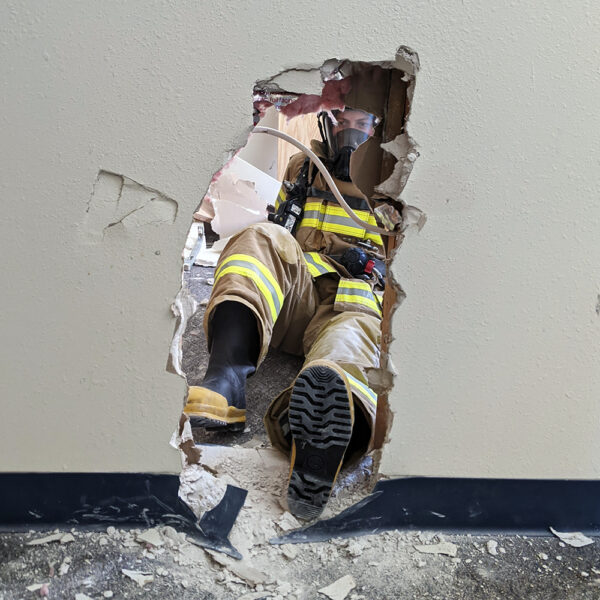
I was completely and utterly exhausted and sore at the end of every day. That being said, it was absolutely amazing and one of the coolest things I’ve gotten to do! The AFD did an amazing job showing us the ropes and I am so thankful for all the time, effort, and encouragement that they gave us throughout; we couldn’t have done it without them!
There will be more station specific training at Pole, and I can’t wait!
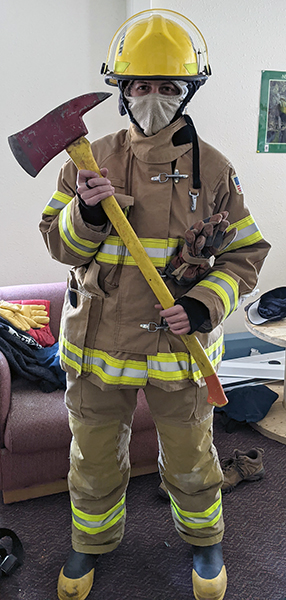
Around Town
Nov 16, 2020
Left behind everything I knew
All the colors but bone white and sky blue
-The Weepies

In a ‘typical’ year, those bound for the South Pole would only stay in McMurdo for a few days before continuing south (though I’ve heard tales of weather delaying flights for over 20 days!). Since this is not a ‘typical’ year, the 40ish of us Polies will be spending around two to three weeks (weather permitting!) here before we fly out. So far, the extra time here has given us the chance to get to know each other before what is sure to be a hectic couple of months turning over the South Pole station from the current winter over crew. It has also given us time to explore and take advantage of some of the recreational activities around McMurdo.
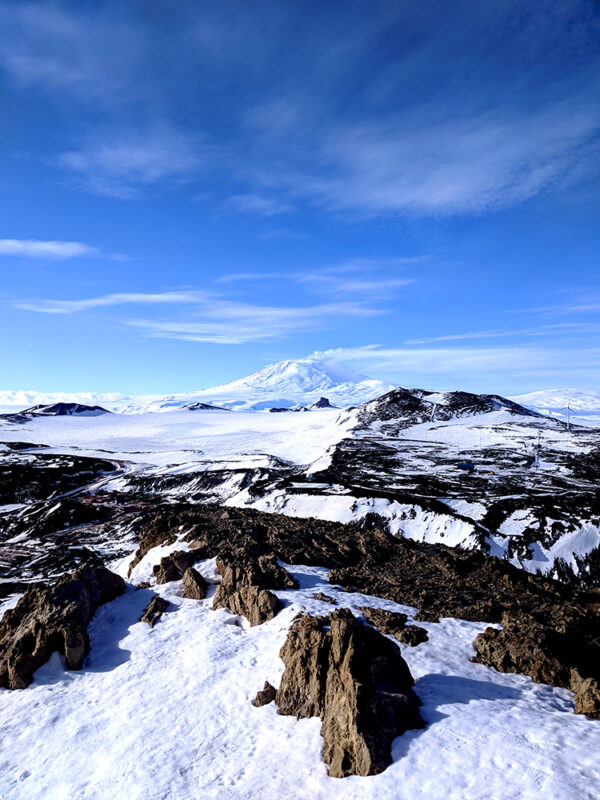
Probably my favorite thing to do is go hiking. Especially since this will be my last real chance to before I am confined to the endless flat white of the Antarctic Plateau. There are a few hills and ridges you can walk to/along that have absolutely amazing views. And maybe it’s because I’m from Florida, but the landscapes here are unlike anything I’ve ever seen or could’ve imagined. I could probably sit for hours (if I didn’t freeze first!) looking out over the Ross Ice Shelf and out into the Ross Sea.
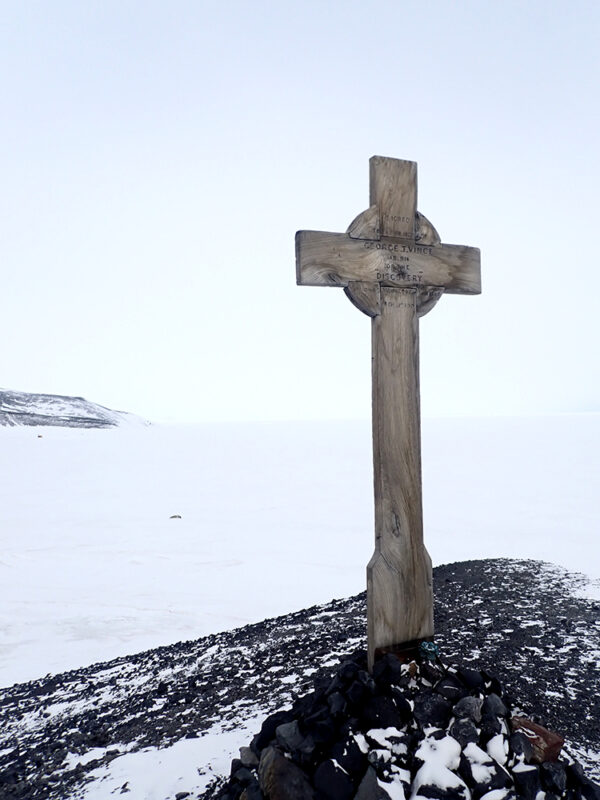
There are also several monuments and markers commemorating the first explorers to come to the continent (that’s what the returners call Antarctica!). One of the coolest places to visit is Discovery Hut which was built in 1902 by R.F. Scott on one of his expeditions. Inside you can see some of the original crates (and their contents!) that he and his team brought with them. Everything has been more or less preserved by the Antarctic cold and the Antarctic Heritage Trust (including seal and penguin remains Scott’s team would have eaten to survive (not pictured here!)).
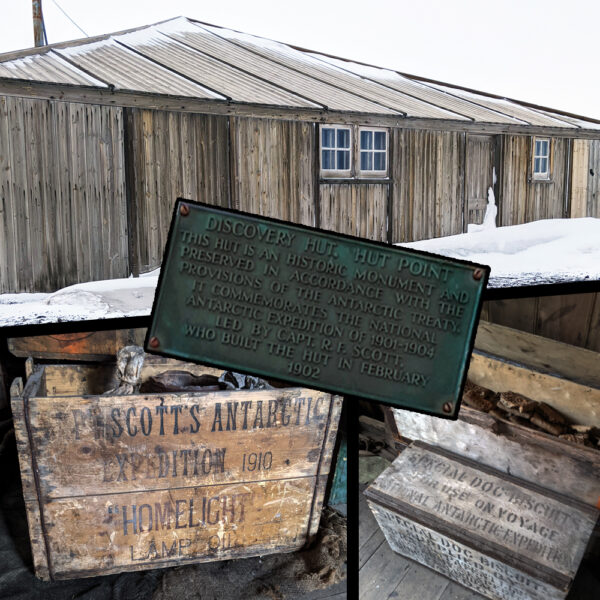
Another thing that will be scarce at the South Pole is wildlife. So far, the majority of the animals I have seen have been weddell seals (including several newborn pups!). They mostly look like giant slugs sleeping on the ice though occasionally you will see them wiggle-roll their way a few feet before they get tired and take another nap. I have also seen a couple of skuas (Antarctic scavenger birds); sometimes they decide that the middle of the road is the best place to hang out! I’ve been told that later in the season there might be penguins and I am both hoping to see them (because it would be awesome!) and not see them (because that would mean we’ve been delayed longer).
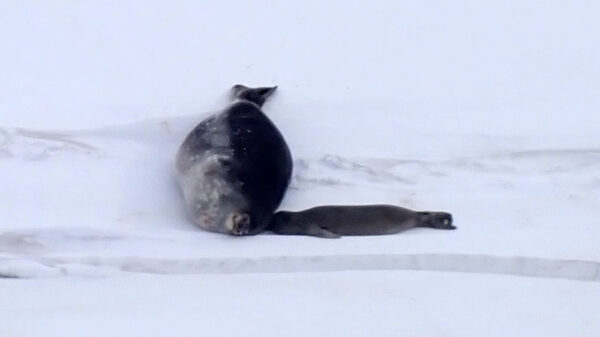
It has also been a lot of fun going on hikes with some of the folks I’ll be spending the next year on the ice with. And if the last few weeks are any indication, it’s going to be an amazing year!
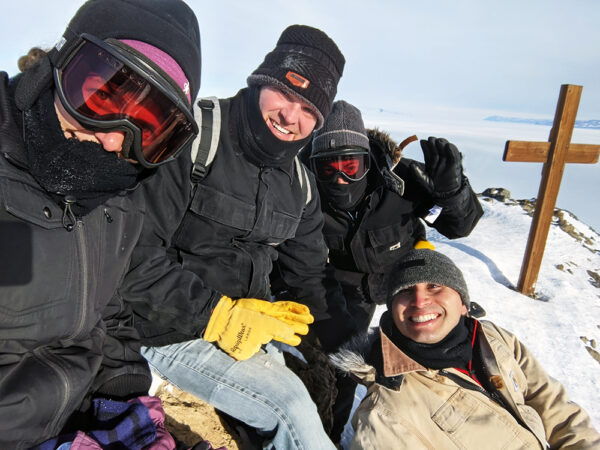
Codex – McMurdo Station
Nov 9, 2020
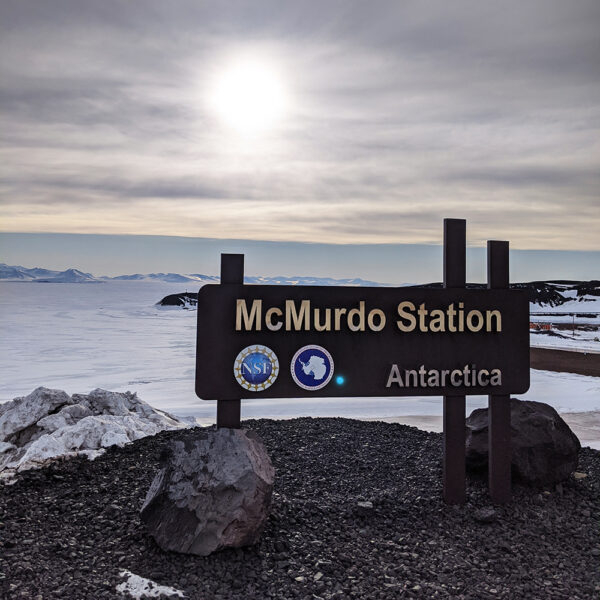
Of the three US bases in Antarctica, McMurdo is the largest. During a typical summer the station can accommodate over 1200 people and serves as the transportation and logistics hub for the rest of the United States Antarctic program. Most all personnel and cargo that are headed to either the Amundsen-Scott South Pole Station or one of the many field camps first pass through McMurdo.

The base was established in 1955 on Ross Island just off of McMurdo Sound on the farthest south solid ground accessible by ship. It is comprised of 80 some-odd buildings including dormitories, a firehouse (it has its own fire department complete with fire trucks!), a power plant, a water treatment facility, a store (stocked with souvenirs, snacks, booze, and essential items you might have forgotten to pack), a medical facility, a galley (serving three meals a day and grab-and-go for those who miss meal times), administrative buildings, a harbor, bars, and even a small chapel (the Chapel of the Snows). Compared to most of the other bases on the continent it is quite bustling and is affectionately referred to as ‘Town’ and the residents as ‘Townies’ (those who stay at the South Pole are called ‘Polies’).
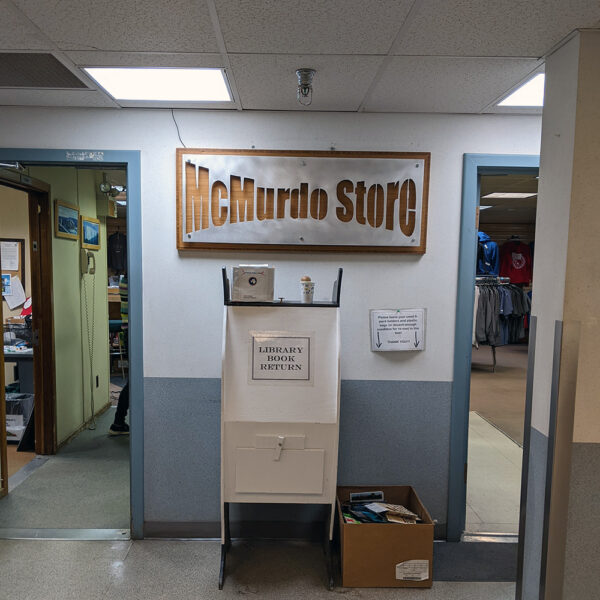
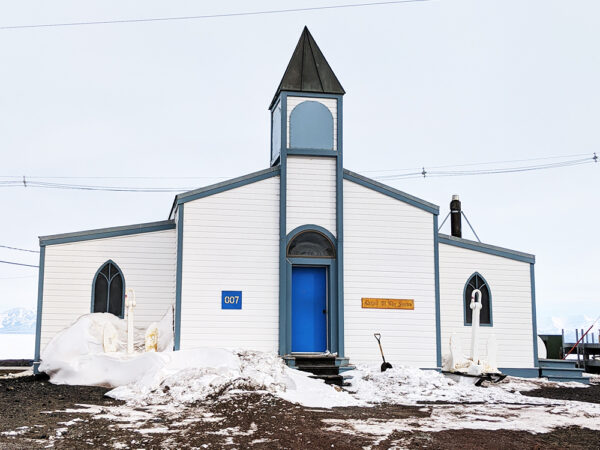
While the primary focus of the base is scientific research, the majority of residents are not scientists. The community is comprised of electricians, plumbers, carpenters, heavy machine operators, waste management engineers, cooks, stewards, power plant engineers, sat/comm engineers, IT specialists, doctors, firefighters, janitors, and so many more. There are quite a few people who have been coming down for summers and/or winters for over 20 (or more!) years. The base is filled with history and stories that get retold year after year. And, occasionally, you come across a hidden gem, like a troll under a bridge.
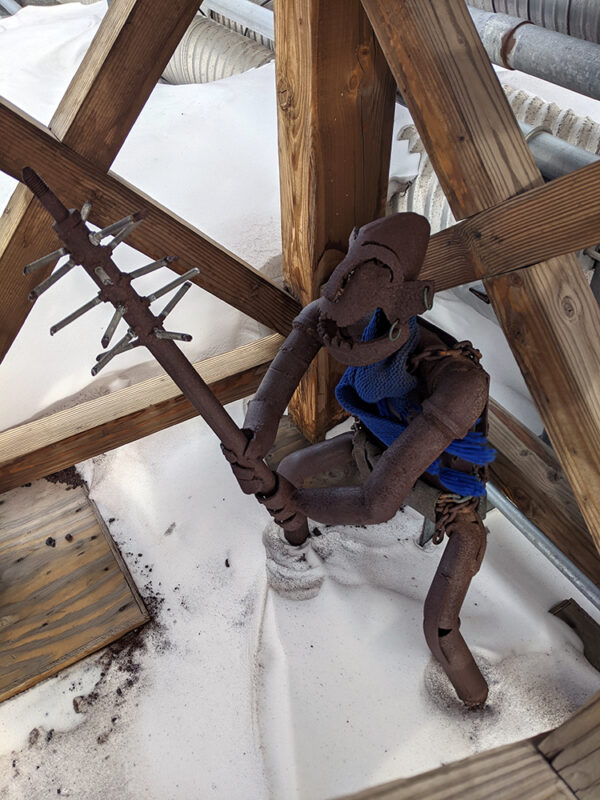
Greetings from Antarctica!
Oct 31, 2020
After two bonus days in New Zealand, my trip to the ice went something like this:
4:45 am: Wake up and wait for a call saying the flight has been delayed.
5:00 am: No call? Guess today is the day! Better get ready.
6:00 am: Board the shuttle heading to the airport.
6:30 am: Arrive at the Clothing Distribution Center to change into extreme cold weather gear for the flight.
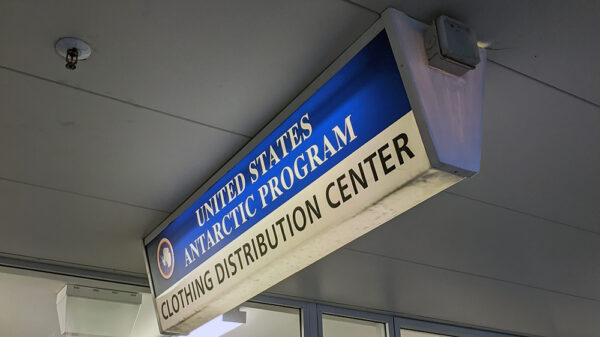
6:45 am: Arrive at the USAP Passenger Terminal, check-in, await further instructions.
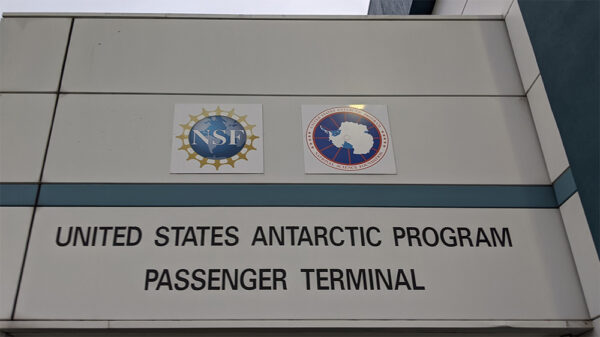
8:00 am: Go through security, get on the bus to the plane, stop for plane selfie, board the plane.
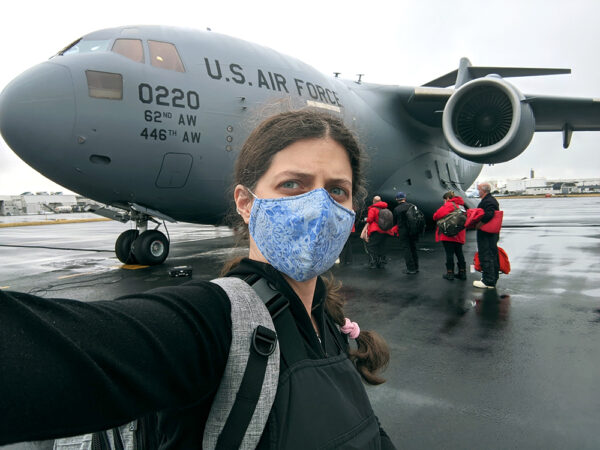
9:20 am: Find out that we’ll be delayed an hour, settle in.
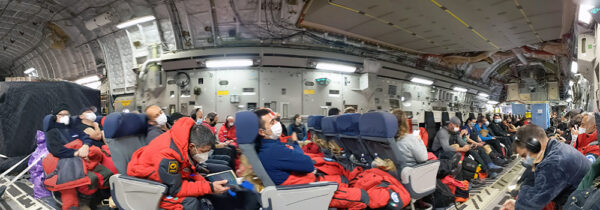
10:30 am: Take off!!
3:00 pm: First view of Antarctica!
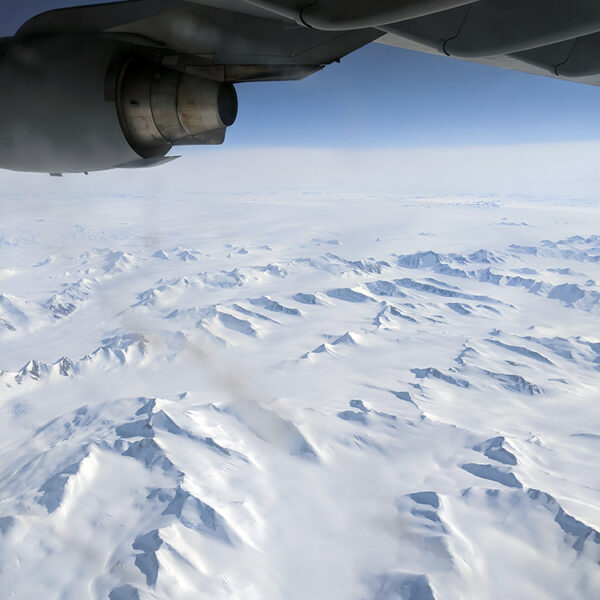
4:30 pm: Land and disembark, take first steps on Antarctica, stop for second (much colder) plane selfie, climb on board bus for ride to McMurdo.
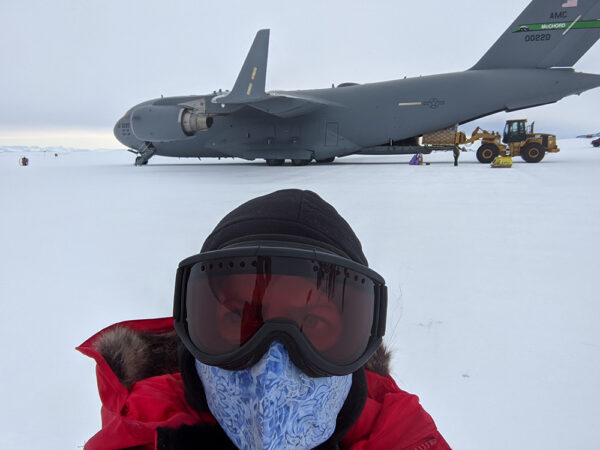
5:30 pm: Arrive at McMurdo, get room key, eat dinner, try to get internet to work (fail).
9:00 pm: Pass out.
I was eventually able to get my laptop to connect to the network (thank goodness!) and while it is rather slow, it is up all the time, which will be nice while I am here waiting for my flight to the South Pole. Next week I start fire training but, in the meantime, I will probably be spending most of my time exploring McMurdo and the surrounding area. And the sun never sets, so any time is a good time to get out and see what there is to see!
Into the unknown
Oct 26, 2020
The world is big and I want to get a good look at it before it gets dark. – John Muir
And just like that my time in New Zealand has come to an end. While I have thoroughly enjoyed it, I am excited to move on to the next leg of my journey. It is currently looking like I will be spending just over two weeks at McMurdo before moving on to the South Pole. My time there should be partially occupied by fire response training and some cross training in medical. I am also hoping to complete the outdoor safety training required to go on hikes off station. If these last two weeks are any indication, I am sure that the next two weeks will pass in a blink. I am not sure when I’ll next be able to post, I am told the internet at McMurdo is… not the best. I will leave you all with one of the last sunrises that I will have seen for a long time.
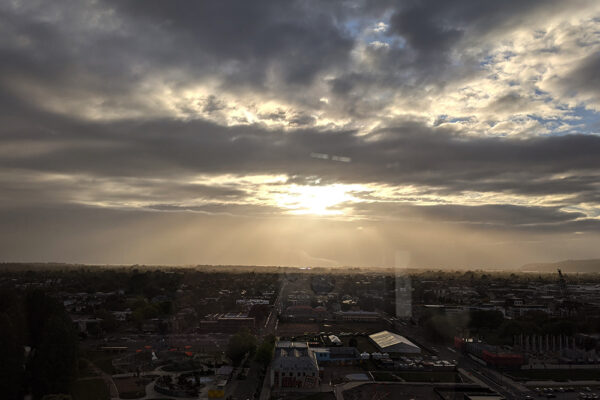
Of course, all of that is assuming that the flight tomorrow is actually able to make it to McMurdo. The flights can often get scrubbed or boomerang (turning around midflight) due to weather. So, we’ll see. I’ll keep you posted!
Codex – Packing for Antarctica
Oct 24, 2020
How does one pack for a year at the South Pole? Since there is little opportunity to get anything while there, you have to bring everything with you. And then you start to wonder, what does a year’s supply of shampoo look like? Of toothpaste? While it would be nice to bring an entire moving truck with all of your possessions, you only get a baggage allowance of 85lbs (though this year they are letting Polies bring an extra 15lbs bringing my weight allowance up to 100lbs). I tried to balance my packing between practical things and (theoretically) frivolous things, all work and no play is dull right?
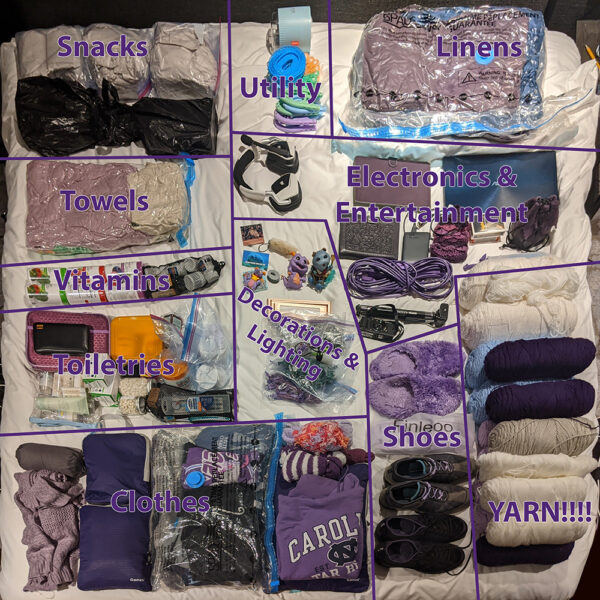
There’s a year’s supply of toiletries (including LOTS of lotion because it’s so dry) and vitamins (Vitamin D for the sun-less winter!), (probably too many) clothes (with fuzzy socks, plenty of thermal base layers, and a swimsuit for the sauna), towels and sheets (I figure you send a third of your time in bed so it is worth it to be comfy), indoor shoes (outdoor shoes are included with the issued Extreme Cold Weather gear), snacks to get me through the year (peanut butter!), twinkle lights and decorations for my room (three sets of twinkle lights isn’t overkill, right?), electronics (laptop, iPad, Kindle, external hard drives with tv shows and movies, camera), around 10 sets of dice (you can never have to many dice!), humidifier (did I mention how dry is it?), and So. Much. Yarn. (I have so many projects planned for the year!)
In all honesty I probably brought too much of some things and not enough of some others. It simultaneously feels like too much and not nearly enough. Though I suppose maybe it could be just right, I guess only time will tell.
Where did Sunday go?
Oct 18, 2020
Reception: “Hi, this is the front desk with a daily amenities call. Is there anything I can get you?”
Me: “Hi, thank you, could I get some more of the instant coffee packets?”
R: “Of course!”
M: “How many can I get?”
R: “Oh, you’re pretty early on in your stay so I’ve just been putting everyone down for ‘a heap’! There’s another term I would use but it has profanity in it.”
I think Kiwis might be my new favorite people.
Kia ora! Greetings from New Zealand!

Last Saturday I boarded a plane that would take me on a 13hr flight across the Pacific to New Zealand for the next leg of my journey. While I was able to sleep some on the plane, plane sleep is never good sleep and I spent a very sleepy Monday (I decided to just skip Sunday entirely, who needs it anyway!) going through immigration and getting checked into the hotel where I will be spending two weeks in managed self-isolation.
What does two weeks of managed self-isolation look like? Well, I haven’t left my room since I checked in (we are allowed outdoor time but I’m fine going without). There are health checks every few days to make sure that I’m feeling well. Meals get delivered to my door three times a day and I receive a daily amenities call from reception to see if I need refills on coffee, tea, soap, milk, etc. (I actually got ‘a heap’ of coffee!).
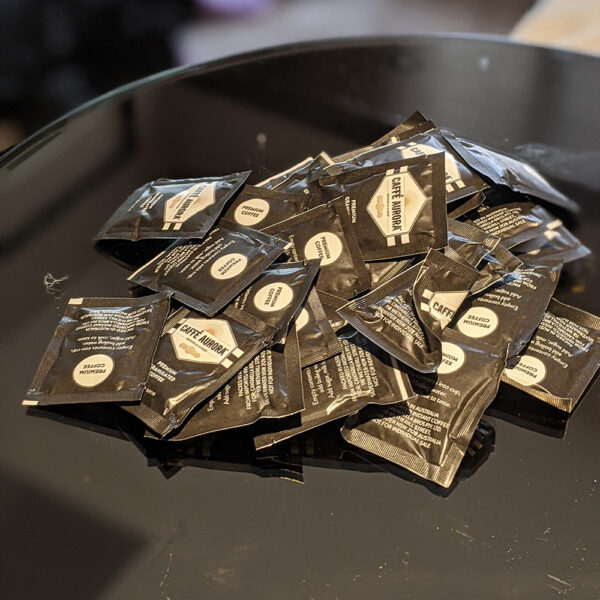
My room has become my world. And, if I’m being honest, I’ve been looking forward to this. I brought SO MUCH YARN with me to work on projects that I’ve been putting off. I have books to read and tv shows to watch (and all of you lovely people to entertain). It’s like a little holiday from all the craziness that the world throws at us. I think I was made for this.
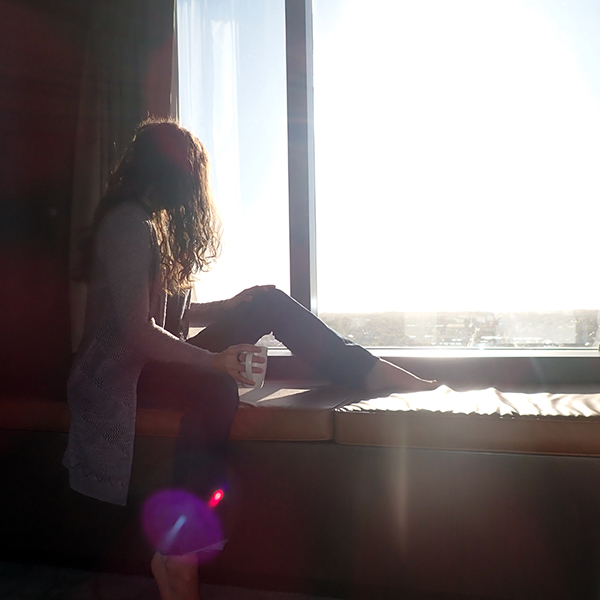
Codex – Antarctica Primer
Oct 11, 2020
Let’s just say that in most global map projections, Antarctica gets the short end of the stick. It is either too big or too small or cut into pieces and often looks like a long white strip sitting at the bottom of the world. But for this blog that simply will not do! And so, I present to you Antarctica in all its glory!
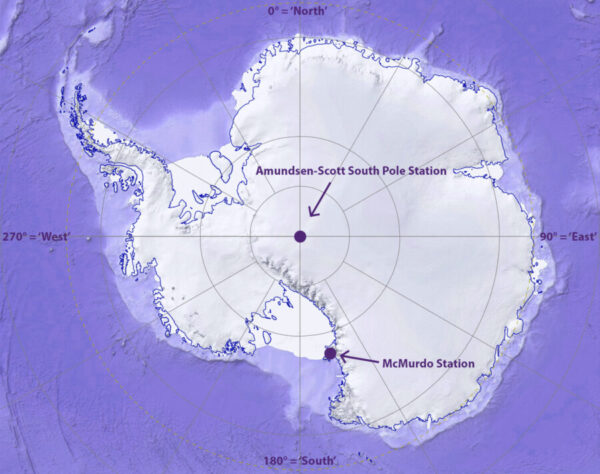
For scale, Antarctica is roughly the size of the United States. There are three US research stations: the Amundsen-Scott South Pole Station (where I will be spending 12+ months!), McMurdo station (near the Ross Ice Shelf), and Palmer Station (on the western peninsula). “But every direction is North! How can you have a western peninsula?!” Why, yes, I suppose from the South Pole every direction is North. However, some very smart people came up with a rather simple system so that people don’t get lost trying to figure out which way North to go. Directions in Antarctica are based on a grid system where the 0° longitude line is ‘North’, the 90° line is ‘East, the 180° line is ‘South’, and the 270° line is ‘West’.
Due to its unique location on the planet, the South Pole (and most of Antarctica) only has one long day (the austral summer) and one long night (the austral winter) per year. During the summer the temperatures can get up to a balmy -30F while during the winter temperatures can drop to -120F. There is no transportation to or from the South Pole during the winter months partly due to the extreme cold (jet fuel freezes between -80F and -50F!) and partly due to the roughly one thousand miles between it and the next closest base. And so, a couple dozen crazy people (Hi! That’s me!) volunteer to stay at the base all year long to keep the place running.
And so it begins…
Oct 8, 2020
Waking up at 3:45am on my birthday was not my favorite but it was a small price to pay in order to begin the epic journey that will take me to the South Pole.
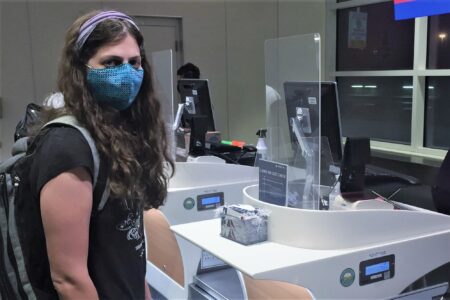
Two flights later (one with a row to myself for some much-needed naptime!), I arrived in San Francisco and made my way to the hotel that will be my home until I leave for New Zealand. Upon arrival I was greeted by some super nice folks from the United States Antarctic Program (USAP) and received an agenda and menu (three meals a day delivered to my door!) for my time here. I then proceeded directly to my room for a (second) nap.
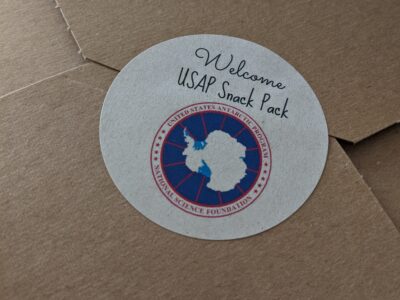
I am now all settled in and super excited for everything that is to come!
Contact Me!
If you have any questions or comments please feel free to contact me at danielle@wildantarctic.com
Some Legal Stuff
This website, www.wildantarctic.com, and all content that is provided under this domain, are private and not intended for any commercial use.
I do not claim any content to be accurate information rather than a product of my imagination or a reproduction of personal memories. The views and opinions expressed here are mine and mine alone.
All contents, including texts and images, are (if not stated otherwise) created by myself and are subject to copyright. If you want to use my texts or images for your non-commercial purposes, feel free to contact me at danielle@wildantarctic.com .
I expressly dissociate myself from all contents of external links on this website. I do not have any influence on those contents.